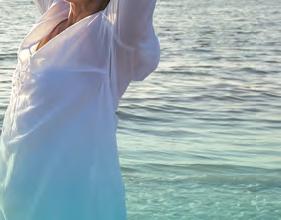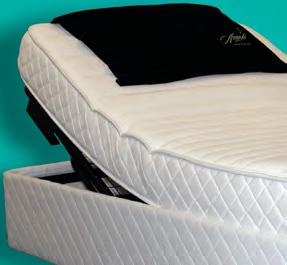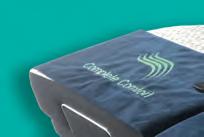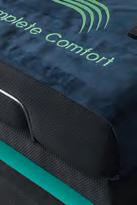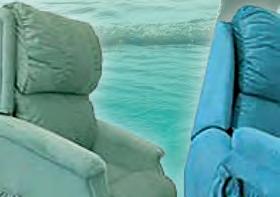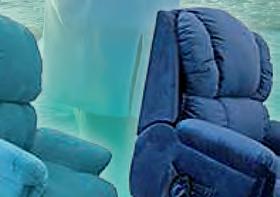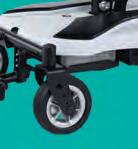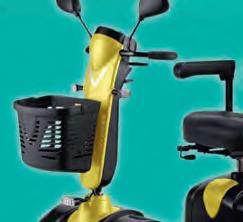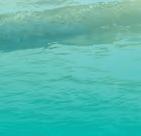























From the brand new, purpose-designed building to the idyllic coastal location, the positives keep adding up at Oak Tree Retirement Village Pelican Waters


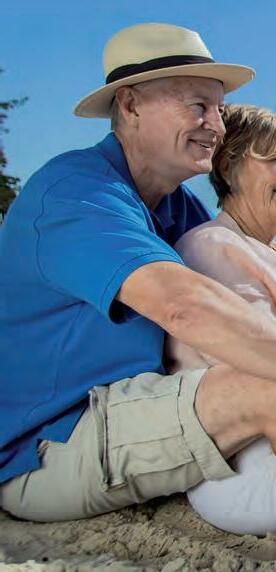
As part of the master planned Marina Village community, this is one of the Sunshine Coast’s most desirable locations. With a dynamic mix of dining, retail and leisure opportunities, Pelican Waters is coastal living at its best.
The popular location provides convenient level access to the nearby Pelican Waters Shopping Village with a variety of retail, supermarkets and health services including a Medical Centre and pharmacy. With beautiful walking paths and close proximity to Golden Beach, Oak Tree offers the idyllic retirement lifestyle.


For our residents, who have often transitioned from larger family homes, moving to a village is about “rightsizing” to a maintenance free retirement lifestyle.
Thoughtfully built with the long term needs of seniors in mind, the design of every aspect means you can downsize without comprise. The ultimate liveability of our functional, modern apartments and the range of exclusive on site recreation facilities gives residents the space to socialise and explore new pursuits.

From the roof-top terrace and gym to the heated swimming pool, Community Centre, lounge and library there’s are new opportunities for you to live your life your way.





With the current real estate market remaining strong, there is no better time to capitalise and consider your retirement options. At Oak Tree Pelican Waters, our team can assist on every step of the journey. Enjoy a personal guided tour with our friendly Village Manager, Greg, who will introduce you to residents and give you a taste of what your new life could be like at Oak Tree. Our residents have plenty of helpful tips for anyone considering making the move. They will often say “just do itcome while you can enjoy it all”!
Final apartments are selling fast so don’t miss out. Book your personal tour today on 1300 367 155.

Display Apartment Open Monday to Friday 10am – 2pm





50 or so years since
were young and carefree, and although it’s easy to lament the good old days, some aspects of the past are best left right there.
particular I’m referring to some of the strict moral codes that penalised young women who “got into trouble”.

the term “shotgun wedding” isn’t missed from the parlance either.
was bad enough that some young mums were left “holding the baby”, so to speak, but for others it was much worse.


month, a decade since the Queensland Government’s apology for the forced adoption practices of the 1950s-1970s, Jo Cranstoun talks to some of the women whose lives were


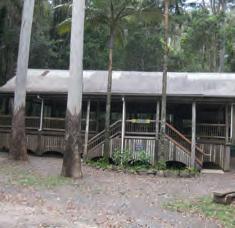

changed by the response to teen pregnancy in those dark days.

Now grandmothers, the hurt of being coerced to give up their babies, or having the infants taken from them at birth without their consent, has never left them.
It’s strange that when the age of consent was 21, it was perfectly acceptable for a teenager to sign over her baby – but adoption was in great demand.

The interviews were heartbreaking for Jo, and yet she found these women, now in their 60s and 70s, demonstrated great resilience and a determination to right the wrongs of the past.

One point often made was their resentment of the term “birth mother” which they find implies they were merely breeding vessels.



“Their pain is so raw decades on,” Jo says. “They couldn’t take the useless advice given to them at the time , which was ‘just forget it and move on with your life’.”
Many are still trying to do that, but must be wondering how life could have turned out in a different time.
Dorothy Whittington Editor



A cruel injustice was inflicted on thousands of Queensland women who found themselves young, unwed and “in trouble” at a time of strict social mores. JO CRANSTOUN investigates the enduring impact of forced adoption on the young mothers who are now grandmothers.
our families because we became pregnant. It was like we had committed a terrible crime and were never accepted back into our families.
“Many of us suffer post-traumatic stress that has taken over lives. Our baby’s birthday and Christmas can trigger us - we always feel that someone is missing.
“After the birth we were all told to ‘forget about it and get on with your life’. But, of course, that never happened. Many of us have been living with our grief for 50 years. What was done was illegal, barbaric and cruel. It has caused massive, long-term problems for all of us.”
From the 1950s until the mid-1970s the babies of young mothers were forcibly removed at birth and adopted by married couples.
Those mothers are now brokenhearted seniors living with the trauma, some never speaking again of a stolen baby, others struggling to reconnect decades later with their estranged adult children.
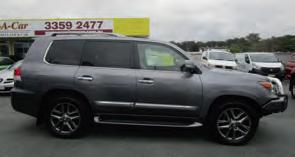
These women consider their babies the “other stolen generation”.

Tireless campaigns for justice led to apologies from the Queensland government in 2012 and the federal




government in 2013. Several churches and hospitals involved in forced adoptions have also apologised.
Trish Large, whose son Alan was forcibly removed at his birth in 1968, is the president of Adoption Loss Adult Support (ALAS) and has spent decades fighting for the victims of forced adoption.
She was awarded an OAM in 2019 for her work and continues to lobby the Queensland Government to change a law that allows any individual involved in the adoption process to veto identifying information, thus preventing biological
mothers and adult adoptees from reconnecting.
“Vetoes are for life,” she says. “We now have adoptees whose mothers died before they could find them because of a veto on identifying information.”
She is also fighting to have the statute of limitations lifted that requires any legal action against a hospital to be taken within three years. This prevents the mothers from seeking compensation.
“The feelings of shame linger still and they engulf our lives. Other people around us just don’t get what we go through,’’ Trish says. “We lost our place in

Shields is angry and wants justice. It was 46 years ago when her newborn daughter was snatched from her and the pain is still raw.
“Young girls today can’t comprehend how this could have happened to us,’’ she says.
Keryn was 18 when she gave birth at the Salvation Army’s Boothville hospital in the inner north Brisbane suburb of Windsor. Boothville had been established in 1924 as a maternity home for single mothers.
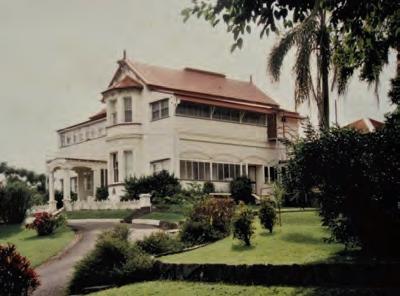
She stayed there for six months in a dormitory with eight other girls, one aged only 13.
“We were made to work every day waiting on the married new mothers, scrubbing steps, doing laundry and scullery duties. We were up at 5.30am until lights out at 9pm,” Keryn says.
“I was pregnant, scared and I couldn’t find anyone to help me. My parents, as loving as they were, were more


concerned about what the neighbours would think. I was so naive I thought that I would just get the help at Boothville that I needed to have my baby.’’
As Keryn begins to describe the birth, she becomes emotional and apologises. She can’t easily speak of the traumatic event.
“I was actually birthing alone, terrified and screaming, with only a buzzer in my hand as the midwife said she had another delivery to attend. As soon as I’d given birth the baby was taken away. I wasn’t even told my baby’s sex at the time.

“Days later that nurse said, ‘I could get the sack for this but if you come down to the nursery at midnight you can see the baby’. I held my baby for 10 minutes.”
Keryn says she was bullied to sign the adoption paperwork by a woman from Children’s Services who came to see her after the birth.
“Thirty days after the adoption I received a cheque for $30 from the Queensland government, obviously payment for my daughter.
“It was years later in 2014 that I found out I could have got my baby back in the
30 days after her birth,” she says.
“There are so many women now in their 60s, 70s or 80s who are still dealing with the trauma of having their babies taken. We are all hurting.
“And I am not afraid to say that I want compensation. Other people have received compensation for far less than what we went through. But I think there are too many of us whose babies were taken and now they are just waiting for us to die. We are living in 2022 and we still find it so hard to cope.
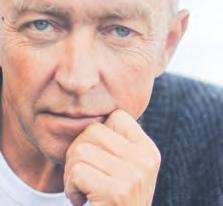

“Over the years I have seen lots of doctors who gave me anti-depressants. They just made me feel worse and I ended up tipping them down the sink.”
Keryn is proud of the long and happy marriage she later made.
“Together we have a son and a daughter, and grandchildren.”
But she feels robbed of 29 years of her firstborn’s life. Keryn placed her details on a database with the adoption support group, Jigsaw, and in January 2015 her daughter made contact.
“The funny thing is she had been living in a neighbouring suburb to me on Brisbane’s southside. She was 29 and had her own daughter, my granddaughter,” Keryn says.



“The relationship hasn’t been easy, but I hope my daughter and I will get together again in the future. The children who were adopted often have lots of issues too. It just goes on and on. Peeling back the layers of pain.”
AfterLesley Mitchell gave birth in January 1972, she says no one ever spoke of the pregnancy or the baby to her again – not until her adult son Shane found her 44 years later.
“After the birth it was like I was living parallel lives,” Lesley says.

“I thought of Shane every day, but I
had absolutely nothing to prove I’d had a child; no paperwork, nothing. I never even saw my baby.
“It felt like everything that had happened was only in my head and I began to seriously think I was insane.
“The staff at Brisbane’s Mater Mothers told me I’d had a boy, but they also told me he was so ill that he probably would never leave the hospital.
“That’s why I never looked for him because I did not want that confirmed. But it was a big lie, Shane had been adopted at three weeks.”
Lesley was living in Bundaberg when she became pregnant. It was a hard time as the family had been deserted by her father 18 months earlier.
“I was sent to Brisbane after my mother saw an ad in the paper for someone to live in with a family and look after their young children. The family knew I was pregnant and took me in for the right reasons. I was lucky.”
The irony was that she had been looking after their three children but wasn’t allowed to care for her own child.
“I knew what society dictated at the time should happen when someone was young and pregnant.

“In the hospital I was given a two or three-page form with two columns that





listed the pros and cons of keeping my baby,” she says.
“One side was filled in with all he would be given if adopted and on my side was only written ‘love’ and the rest blank. How subtle is that?

“One day I found the nursery where all the babies were and went up to the window and a nurse came shrieking down the hallway ‘get that girl away from that window, she is not to see that baby’.”
Lesley later married and had two more children.

“Shane was 44 when he finally found me,” she says. “He contacted Jigsaw, gave them all the information he had and received a call back about two hours later, asking ‘do you want to know where your mother lives?’ They found me on the electoral roll.
“Shane and I have forged a really strong bond – I admit most reunions fail. He gets on with my other kids who have accepted him. It hasn’t been great but it’s not bad.”
Lesley says accountability for the way she and others were treated is long overdue.
“I am bitter and angry. I feel I was continued over >
absolutely conned and I am not the only one - it has hurt so many people.


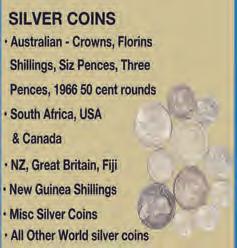
“I would take compensation if it was given but I want justice. The apologies delivered were only words and nothing has moved on since. A full inquiry hearing our evidence would be good.”
Lesley says the practice of ripping away adopted children’s biological identity was cruel.

“The practice of erasing a baby’s name in adoption has caused lifelong grief and lost connections. They cannot recover,” she says.
When a baby was adopted, the original birth certificate was cancelled and their amended certificate listed the adoptive mother as the birth mother.
“My son is furious this happened to him. This false birth certificate is what adoptees use for passports and you have to sign a declaration that this is a true document. Every adoptee has to lie to get a passport. It’s not right.
“Not having me on his birth certificate means Shane can’t be listed as my son on my death certificate one day.


“We could apply for an Adoption Discharge, that’s when an adoption ceases to exist, but it’s granted at the whim of a Supreme Court judge.”
Lesley says the forced adoption also took a toll on her mother, now 90.

“My mother said after Shane found me that if she’d known how resilient our family would become she would have fought harder for me to keep him. I know my mother feels really bad. She has apologised to my son and he understands what was the situation at the time.”
Lesley is now single and plans to stay that way.

“I am too damaged,’’ she says. “I have trust issues and I’m not going to inflict those on anyone else anymore. I found mainstream medical help and therapy just didn’t cut it for me.
“I am very much a loner and I don’t go out much. It really ruined my life and because my life was so seriously screwed up, I’m now nearly 70, and will have to keep working until I can’t.”

Lesley says forced adoption is a sensitive and personal subject for many women.
“One of my friends will take the secret of her baby to the grave. Another married the father of her adopted child, and they went on to have three full siblings. She told me her story once but won’t speak about it again and she hasn’t told anyone else.
“You don’t realise how many people this has affected. I tell mothers it wasn’t their shame to carry but it’s a huge thing to deal with if your baby was stolen.”

Support (ALAS) since 1992 and before that the North Brisbane Birth Mothers Support Group, Trish has spent her lifetime fighting for the rights of victims of forced adoption.
In 2019, she was awarded an OAM for her work as an adoption justice activist

“I was keeping my baby and taking him home. I wasn’t giving him up for adoption,” she says. “But they took him straight from me. I never saw him or held him. I was tied to the bed.”
Trish had supported herself through her pregnancy as her mother had thrown her out when she heard the news.

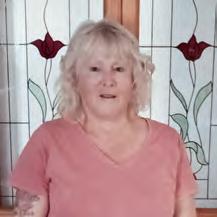
But what she didn’t know was that her mother – at a time when the age of consent was still 21 – had signed the forms for the baby’s adoption.
“My mother told them she didn’t want the baby coming home,” she says. “I didn’t even know that my parents could do that behind my back.”
Large gave birth to her son on October 17, 1968, but it would be 22 years, 11 months, five days, five hours and 45 minutes of heartbreak before she would see him.
She had just turned 20, and was restrained when her baby was taken from her as soon as he was born.
It was a difficult birth. The baby’s head was misshapen by the forceps delivery and Trish was exhausted but all she wanted was to hold her baby.
“The young doctor said he would get him, and I heard him tell the sister, “the mother wants to see her baby. It’s her right.”
Instead, the sister stormed in, telling

unmarried, unemployed and unfit to see, hear, hold or touch this baby” before slamming the door as she left.









Her newborn son, who she named Alan, was put in a locked nursery and Trish’s nightmare began. She was given Stilboestrol, a lactation suppression drug that’s now a banned carcinogenic, every day until she left hospital.
Trish has since gained access to her full hospital file through Freedom of Information, which she says shows that her dosage was three times the legal limit.
She also had her breasts bound by three nurses, one with a knee on her back, who wrapped an elastic bandage from the top of her chest to her waist so tightly that she could barely breathe.




A social worker arrived with a clipboard and a brown envelope and announced, “Good news. You and the baby are medically fit to leave hospital. Sign here.”



Believing this meant they would be leaving together, Trish signed.
When she went to the Child Safety department, she was told they had never handled a case for Patricia Large and she needed to go to the Royal Brisbane Hospital to get proof the baby existed.
There, the response was the same: “There’s no Patricia Large here. You never gave birth at this hospital.”


Next, she tried the police who sent her back to the hospital for proof that
she’d even had a baby. Trish vowed she wouldn’t stop fighting. And she didn’t.
On August 21, 1991, Trish was finally reunited with her firstborn.
“We made ourselves a promise that never again in our lifetime would anyone ever come between us,” she says.

“He’s got grey hair now, but he’s still very handsome.”

It is estimated about 150,000 babies were adopted in Australia between 1951 and 1975. It is unknown how many of them were forcibly removed.

“To the mothers whose babies were taken and hidden from them, and who were deceived, threatened or forced to relinquish their babies, we say sorry.” A ceremony will be held at Brisbane’s Roma Street Parklands to mark the 10th anniversary of the Queensland government’s apology for forced adoption on November 27 at 3pm.







Jigsaw 3358 6666 or visit jigsawqueensland.com

LifeLine 13 11 14 or visit lifeline.org.au
ALAS (Adoption Loss Adult Support) call 0417 077 159 or email alasqld@ alasqld.com










I
there is a
Have your say. Send letters to Editor, Your Time Magazine, PO Box 6362, Maroochydore BC 4558 or email editor@yourtimemagazine.com.au
November 5, 1605: Guy Fawkes is arrested beneath the Houses of Parliament in London after the “gunpowder plot” to blow up King James fails.
November 17, 1558: Queen Elizabeth I ascends the throne of England at the age of 25.
They have certainly come up
innovative ways to do this
example, Inclusee’s
built in safeguards. (Your Time, Sept 2022).
In addition, I would like to

revisiting some of their lost
Social media is not the be-all and end-all for seniors. Viewed from the outside, social media seems to be full of traps for the unwary. One hears reports of meeting bullies, perverts, scammers and egoists online.

Now could be the time to think about taking up a sport or exercise activity, with your doc’s OK of course.
A new handcraft activity
might give endless pleasure, and can be shared with others.
Or perhaps you could write that novel, paint a picture (go to art classes) check out a church, learn a musical instrument, write letters to the editor …
The list of possibilities is endless and personal. Bring back that dream and in many cases, you may end up meeting likeminded people.
If you have a rebellious streak in you, pretend to be dumb when bureaucrats and businesses insist that you MUST do something online.
Visit your local library for help too. The job of the librarian seems to have evolved into shelving books, running group activities and helping people with computer problems.
As for chats, there is still the phone if you like to reminisce.
Val Wigzell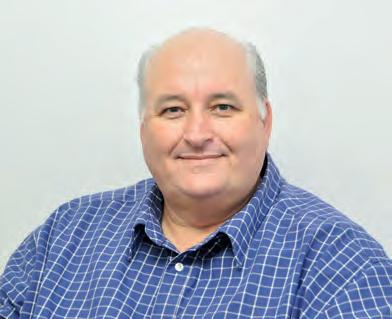
November 19, 1800: First copper coins circulate in New South Wales.
November 7, 1861: Archer wins from a field of 16 horses in the first Melbourne Cup, to claim 710 gold sovereigns in prize money.
November 17, 1869: The Suez Canal formally opens after more than 10 years of construction.
November 11, 1918: At 5am, in Marshal Foch’s railway car in France, the armistice between the Allied and Central Powers is signed, silencing the guns effective at 11am.
November 2, 1952: Lang Hancock discovers the world’s largest iron ore deposits in the Pilbara.
November 22, 1963: At 1pm, in Dallas, Texas, John Fitzgerald Kennedy, 35th president of the United States, is pronounced dead.
November 15, 1980: Pope John Paul II visits West Germany, the first papal visit to Germany in 200 years.
November 9, 1989: The 45km Berlin Wall is opened up after standing for 28 years as a symbol of the Cold War.
November 11, 1992: The Church of England votes to allow women to become priests. Ten days later, the Anglican Church of Australia followed.
If you grow geraniums you will notice rust on the leaves. Due to the wet weather, this disease can severely affect your plants.
Remove as many affected leaves as possible, as well as any leaves under or around plants, and put them in the bin. Spray with Mancozeb as per instructions.
I would also pot up some new cuttings. Time to plant lettuce, spring onions, corn and tomatoes. Home grown beetroot is so much better than buying in a tin.
Roses are in full bloom. Pick regularly for more flowers and spray for black spot if needed. Snapdragons have performed exceptionally well, and there’s still time to pop in a few more, along with zinnias and asters. All make excellent cut flowers.
Time to feed lawns to keep them lush and green. Keep weeds at bay by removing when small and definitely do it before they flower and set seed. Move succulents to a drier area if wet weather persists.
Plant now for a Christmas display. Even a few plants in pots can brighten up an area and they also make good presents.
Where has the year gone? Hard to believe 2022 is nearly over.
Happy gardening Penny Hegarty
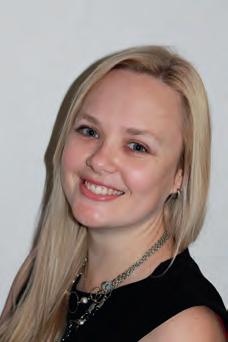
Located by the beautiful Lake Kawana on the Sunshine Coast
12/9
Birtinya



GRIFFITH University researchers are calling for Queenslanders aged over 75 to take part in a survey as part of a project aimed at protecting seniors from the impact of extreme heat.

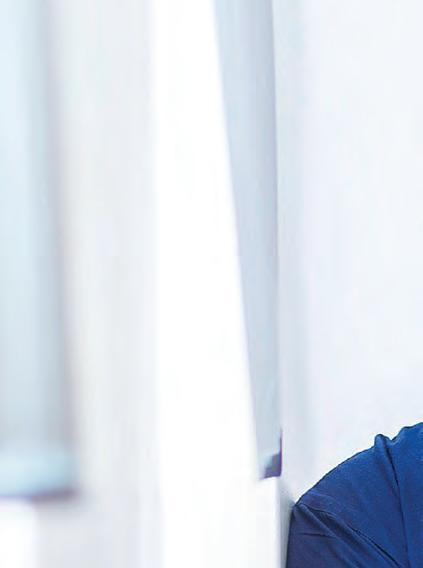

The survey is paper-based and asks participants to share their thoughts about heat, how it impacts their health, and how they cope during hot days, as well as to share their views and experiences using digital technology.

Extreme heat kills more people in Australia than any other natural disaster, and in Queensland, high temperatures claim more than 100 lives each year.
Although heat can impact anyone’s health, Queenslanders over the age of 65 are at higher risk.
Without taking the right steps to protect ourselves and keep our homes cool, extreme heat can lead to heatrelated illnesses such as cramps, exhaustion and heat stroke.
The Ethos project team is developing an in-home warning system to protect older people during extreme heat.


To take part, contact the research team (details below), for the survey to be posted to your home. The completed survey needs to be returned by Tuesday, November 15, in the addressed replypaid envelope which will be sent with
the survey.
The survey will take about 30-35 minutes to complete, and participants will go into a draw to win one of five $100 retail vouchers.
Call 5552 7903, email ethos@griffith. edu.au or visit climate-ethos.com
What you will be asked to do Complete an anonymous paperbased questionnaire

heat as
using personal and
The views of people who don’t use the Internet/digital
are just as important as
views of those who do, and are critical to the research outcomes.
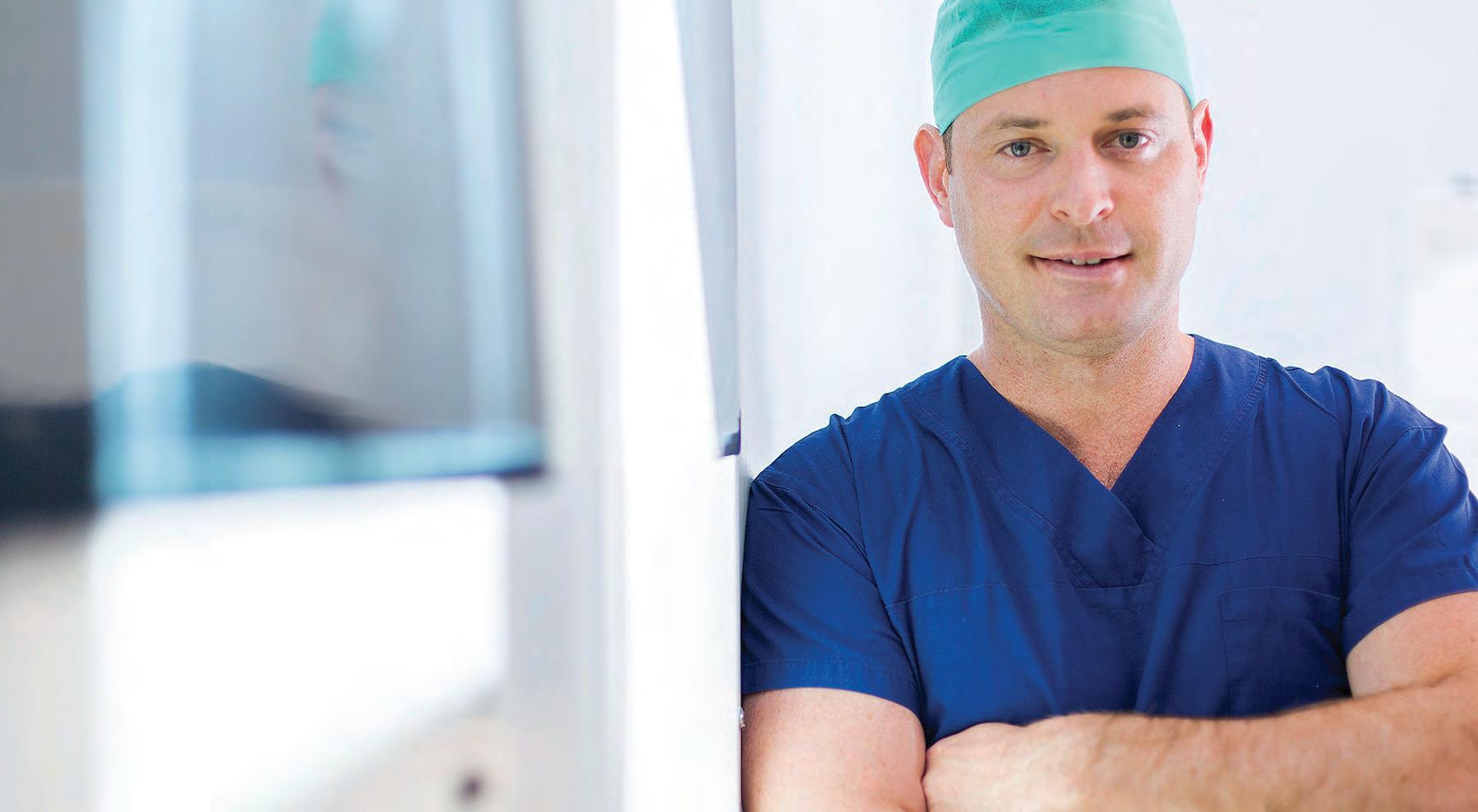
Completion of the questionnaire is likely to take 30 to 35 minutes.
Data obtained from the survey will be used to understand the perspective of the older Queenslanders regarding heatwaves as a threat to their health.
incorrect words to describe a person.
We Germans were called krauts because of the word sauerkraut, a sour, fermented vegetable. My husband had great fun explaining to his Australian friends he was not a “sour” Kraut but a happy one. I hope you get the joke.
I was informed by a young mother the other day that we must not refer to “breast milk” as it is now called “chest milk” or “human milk”. Master bedrooms are called “primary” bedrooms and woe betide the real estate agent who still uses the description of master bedroom.

Children loved her books, but they had to disappear from shelves.


Old nursery rhymes have also become unacceptable. Baa baa black sheep is now baa baa rainbow sheep (I am not kidding). I wonder how the sheep feel about this?
I used to devour cheap little booklets about the exciting adventures of farmers in the American West fighting the Red Indians. My sympathy was always with the Indians. I liked their chiefs. They had such colourful names.
by Cheryl LockwoodWHEN I came to Australia in the 1950s, a great wave of migrants descended on this country. Many from Greece, Italy and Germany. The Australians were not reticent in giving the new arrivals a nickname as, affectionately, they often do.


Coming from Germany we were called Krauts, and other names were given to the Italians, Greeks and other migrants from Europe who were collectively called “New Australians”. It’s safer for me not to repeat the nicknames, but I know you can recall them.
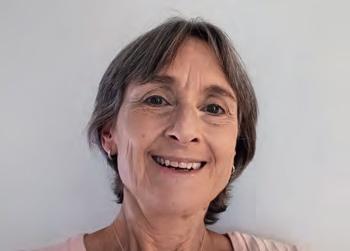
I hate to think what would happen to me today if I used any of those politically-

Everyone’s old staple cheese – again, I dare not name it – is now called Cheer cheese. Having been in business myself, I can well imagine how enormous the cost of rebranding a well-established and loved product would have been.
Xanthorrhoea, more easily spelt as grass trees, have replaced “Blackboys”; bad luck that I wrote a poem – and had it published – about the beauty of Blackboys.
When I see a tough footballer cry on the footy field because somebody called him a not politically-correct name, I can’t believe it. One thing is for sure, the men of my generation were tougher. They would have laughed it off or decked the name caller.
Children’s books have not escaped the politically correct razor gangs either. Enid Blyton is turning over in her grave.
Nobody would dare to publish such stories anymore. White and Red are no longer correct in the description of people, so maybe now they too will be described as “rainbow-coloured”. Just about anything to do with colour is now in danger of being you know what!
Political correctness is lurking everywhere and must be adhered to, so I wonder what will happen to all the funny jokes: the dumb blonde jokes, priest and rabbi jokes, ethnic, or should I say racial, jokes?
Will there soon be no more jokes because we won’t dare to make fun of one another? Are we losing the art of laughing at ourselves? Will there soon be no one brave enough to tell a joke?
May you still enjoy the old jokes and stories, even if it is in secret.
WHEN I was five years old, my neighbour inspected my latest wound and announced that I had a bloody blister. I glanced nervously at my mother, awaiting a reaction to the word “bloody”.
In our house, that was a swear word, so I was surprised that nobody seemed to notice. We just called it a blood blister. It’s amazing the power of adding the letter “Y” to the end.


Nowadays, that word is in everyday use, along with sgronger examples that would have earned the threat of a mouth washed out with soap or a clip around the ears from dad. I don’t remember this actually happening. A threat was enough.
My mother said, that as a child, she would have been in trouble for telling
someone to “shut up”. This always amused us. There were four children in our family and the term was used almost daily, especially by our parents when the nightly news was on.
The reason for my sudden prudishness came about when I was at a service station and the young lady behind the counter was on the phone. Her conversation was peppered with swear words, but once off the phone, she served me with a friendly smile. She didn’t seem particularly angry, leaving me thinking that this was her normal way of speaking.
In my teenage years, I threw expletives around like a drunken sailor. Truth be known, I only cleaned up my act when I had children and didn’t really want them to think certain words were acceptable. However, I also worked in a shop after school and never would have spoken those words in front of customers.

In Grade 4, our teacher Mrs Stoeckal sent Malcolm to the boy’s toilets to wash some rather colourful language from his mouth with soap. She sent Peter along with him to make sure he did it.
Peter came back to announce, in excited disbelief, that Malcolm had taken a big bite of the soap. I suspect Malcolm had already acquired a taste for soap and his potty mouth was not magically cured.
It doesn’t seem that long ago that television stations bleeped out words or at least aired adult programs after 9pm.


The nightly news still bleeps away, yet it seems that profanities are used freely on the midday movie for all ages to hear.
Sometimes, faces are blurred to keep us from lip-reading or to protect identities. Hubby then remarks that people with blurry faces sure get in trouble a lot!
A colleague once said, “with over one million words in the English language, I think I can find an alternative to a swear word.”
I try to keep this in mind. That’s why we have those #$@! symbols across the top of the keyboard.




I’ve heard sugar and fritz muttered in public settings instead of harsher words. Even our much-used “crikey” probably originated as an alternative to using Christ as an expletive.
“Geez” was deemed less offensive than “Jesus”. It was years before I realised that “strewth” was a contraction of God’s truth!

Naughty words appear on supposedly humorous plaques, T-shirts and bumper stickers. I often wonder how parents explain, as they sit in traffic, when their young children question the sticker on the car ahead.
One more thing. My theory is that if you scatter profanities throughout your everyday speech until they become acceptable, there are no words left to use when you really need them.
Ah, life is a gosh, dang adventure!
Visit lockwoodfreelance.com
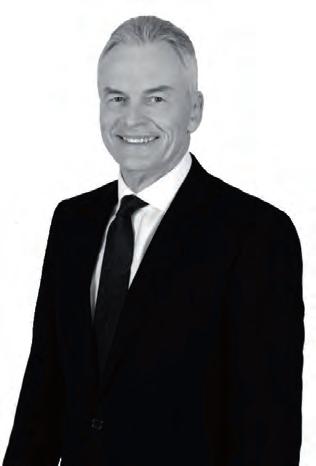

Young people of the 1970s who dreamt of becoming self-sufficient away from bureaucracy and city life, shocked conservative Yandina when they found paradise on Brown’s Creek Road. AUDIENNE BLYTH celebrates the Starlight community’s 50th anniversary.
about 7km west of Yandina, came into being on April 26, 1972 when Tom Vichta bought 140 acres from a farmer who had been growing bananas.
Tom’s idea was to provide young people a cheap place to live. The valley of Starlight was, and still is, a beautiful rainforest with streams and waterholes.
Vichta also organised the first Australian Buddhist meditation course at Diamond Valley and formation of the Chenrezig Institute at Eudlo, in 1974.
The 1970s were the era of Joh Bjelke-Petersen and the authorities did not take too kindly to “long-haired, dope smoking/growing hippies from down south”.
It was said that a guy with long hair could stop the traffic in conservative Nambour and it was not uncommon to have to walk out of a shop because everyone was suddenly too busy to want to help.
Many young couples arrived at Starlight to try a different sort of life. Those who stayed have memories of belonging to a vibrant community and having to overcome many difficulties. Some left after finding the lifestyle too difficult.


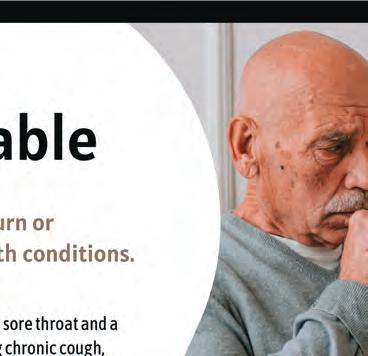
In 1975, another 180 acres were added to Starlight. At first,
lots were sold at $100 an acre but there was a shortage of cash to buy building materials so many dwellings were makeshift.
One story is that tarpaulins were donated by a fertilizer agent in Yandina. Unfortunately, they smelt strongly of urea. Whatever could be scrounged was used, whether from


sawmills or demolished buildings.
Only a couple of the early dwellings remain, mainly due to the voracity of white ants. The abundant wildlife, including large carpet snakes, goannas and bush turkeys, was sometimes another difficulty.
Negotiations came from a concerned Maroochy Shire Council which demanded the lots and buildings comply with council regulations.
Starlight became a company with shareholders to overcome the legal barriers of subdividing the land. Its zoning was Special Facilities, Existing Bushland, Multiple Occupancy to allow 23 houses and flora and fauna conservation.

Protection of the environment has always been a driving force at Starlight.
Residents have a strong conservation ethic and can boast a large privately-owned and protected wilderness area.
Starlight residents have also



shown themselves to be innovative.
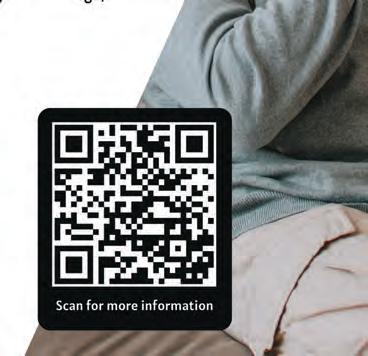

They established the Yandina Good Life Fair in 1977. It has been an annual event until the present, having been renamed as Yandina Spring Fair or Yandina Street Fair with only a couple of years missed because of Covid.
At one stage, four business owners in the main street of Yandina were from Starlight. One resident became a member of the local council, while the fire brigade formed in the 1980s has now proudly opened a three-bay shed.
Residents also provided the labour to build the gravel road into Starlight.
The novelist, Peter Carey, once a Starlight resident, in accepting the Miles Franklin award for Bliss, told the London crowd, “It’s a long way from Brown’s Creek Road”.
Thanks to Annie Smallmon for her research in A Vision Unfolds, the Last 50 Years.

“Each time we hear our favourite song, the memories come along, older times we’re missing, spending the hours reminiscing,” Little River Band sang to great acclaim in 1978, and, writes KENDALL MORTON, there is still a lot to be gained from reflecting on the past.
In1963, Dr Robert N. Butler began researching why older people reminisce. The physician, gerontologist, psychiatrist and Pulitzer Prize winner noted the older we get, the more we reminisce.
He coined the term “life review” for this process and saw it as having definite therapeutic value.
It’s important to distinguish between reminiscing and remembering. Remembering can put pressure on the older person to recall facts and details.
Reminiscing is more free flowing.
It can be triggered by objects, such as old clothes, Christmas cards, a song or, of course, photos.
Locations and foods can also help. Reminiscing is most commonly encouraged through questions.
Following on from Dr Butler’s work, health practitioners and researchers generally agree reminiscing has many benefits for older family members.
It helps preserve family history, promotes conversation and can remind older family members they are valued – they have information and stories that are unique.
Reminiscing can assist an older person put their life into perspective. They can see their experiences as a timeline from childhood to now. It’s a chance to reflect on their achievements, their family, social connections and the times they lived in.
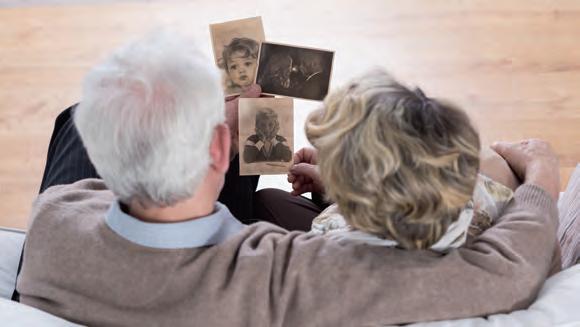
This new perspective can reduce the stress and discomfort of aging. Reminiscing can reduce boredom. Try asking your parent if they broke some school rules or wagged school or got into any mischief as a child. It can spark funny stories and laughter.
There are two ways to approach reminiscing. One is the informal conversational approach.
This suits most families as you can ask a question or two
during a family visit when it’s appropriate. For instance, if a grandchild is going to swimming lessons, you can ask “Dad, who taught you how to swim?”
Health workers and carers often take a more structured approach. For someone with early dementia a memory box can be useful. Look around the house and the local opportunity shops. Put together a collection of old coins, recipes, letters, jewellery, football cards, theatre tickets, travel brochures, photos or other items you think have a special meaning.
Photocopy precious photos instead of using originals. This box can be added to over time and brought out regularly.
The most common form of reminiscing is conversation. It’s flexible. There are no props and you can start or stop the interaction quickly.
One question may lead to many follow-up questions so there is a natural flow. Here is a
selection of typical questions: What family holiday traditions did you have growing up? What meal did you like best as a child? What chores did you have? Did you get pocket money? How did you get to school? Did you have a nickname? Were you good at sport? What was your first job? How old were you? How much you were paid? Who taught you to drive? What was your first car? What did you do for fun? What music did you like? What are you most proud of?
Some questions can lead into activities such as cooking a special dessert or finding a favourite song. Reminiscing needs to be light and fun.
If it’s just a list of questions, it can feel like an interrogation. It’s the reflections that are important, not the questions.
Kendall Morton is Director of Home Care Assistance Sunshine Coast to Wide Bay. Call 5491 6888 or email kmorton@ homecareassistance.com

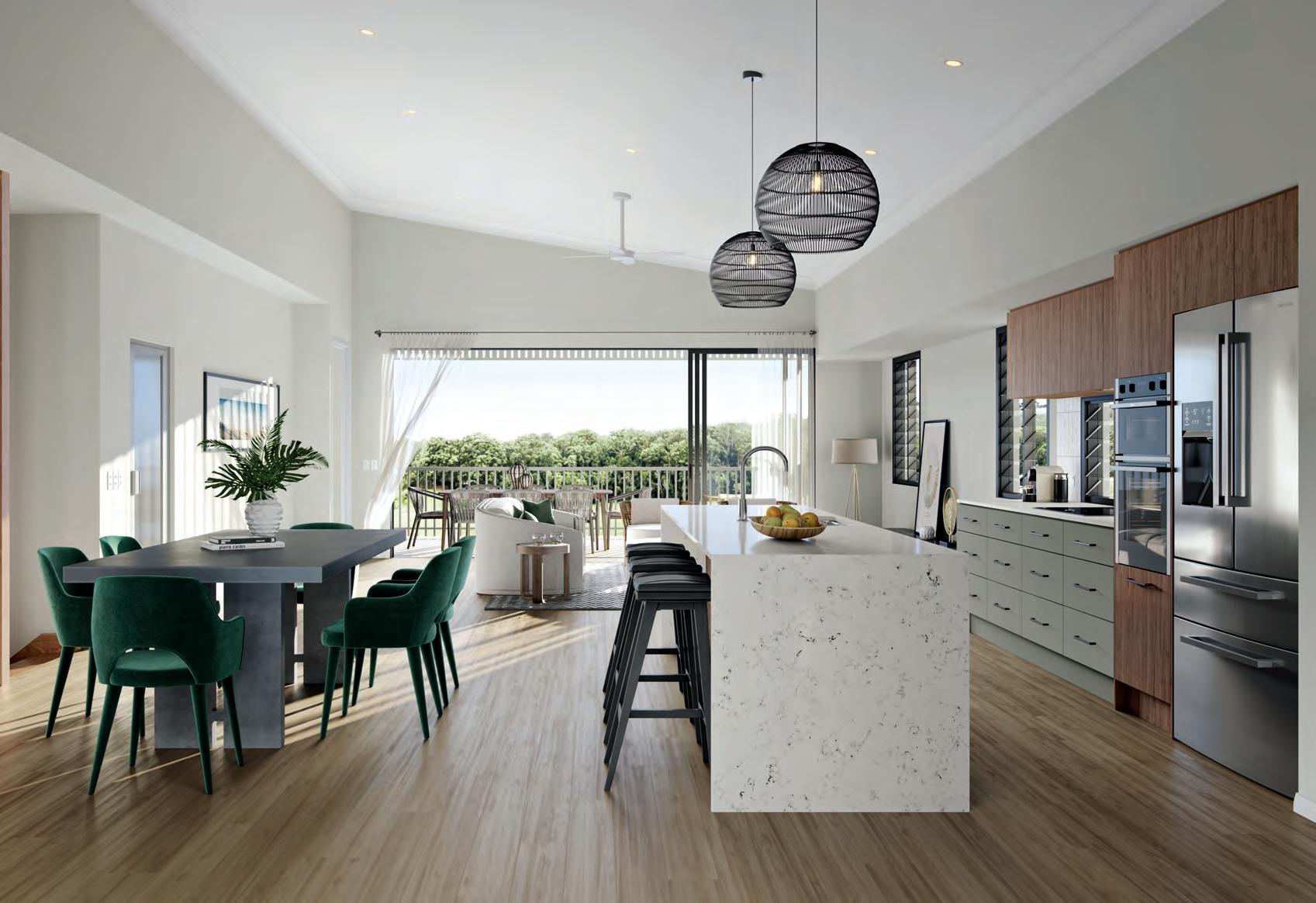


There comes a time when it is a good idea to set yourself up for failure. KAILAS ROBERTS explains the efficiency of the brain means processes become automated, but it needs to be challenged for optimal cognitive exercise.
Whenwe are young, we fail at everything. Of course, everything is novel and unfamiliar and this is hardly surprising.
We must learn what we later consider the basics: to walk, talk and control our basic bodily functions so that we are not left in awkward social situations.
It is no surprise that this period – early childhood in particular – is associated with a rate of brain growth that will never occur again throughout our lives.
In fact, it has been estimated that your brain grows to 90 per cent of its adult size by the time you are five. It then continues to grow more slowly and is the largest it will ever be when you are in early adolescence.
From then on, your brain starts to shrink. This is initially a necessary and beneficial process.
A process of rewiring (“pruning”) takes place, in which obsolete synapses – the connections between nerve cells – are removed.
This removal and simplification of circuitry makes the brain much more efficient, leading to you having peak cognitive powers in early adulthood,
although different cognitive functions peak at different times.
Later in life, the shrinkage of the brain does not confer the same benefit.
Normal ageing is associated with reduced brain size – the volume of the brain is thought to decline by about 5 per cent each decade once you reach 40, the rate further accelerating beyond the age of 70.
This may partly explain some of the classic cognitive problems that occur as we get older – mild memory problems, slowed thinking and tip of the tongue moments.
The shrinkage of the brain occurs because of several factors, and if severe can lead to dementia.
One of the more hopeful findings about brain volume and function, however, is

that you can positively influence it, and this may protect you against the damage that results in this condition.
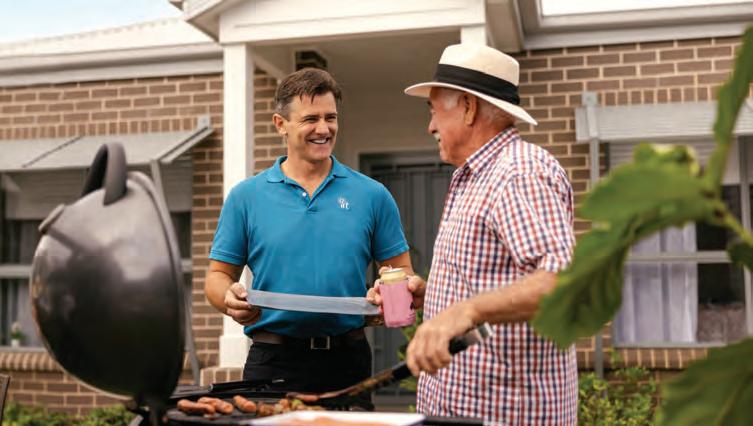
I have written before about the power of physical exercise – which we know can increase the size of the hippocampi, structures critical in the process of memory formation.
Another brain booster is cognitive exercise, that is, giving your brain a good workout rather than – well, ideally in addition to – your body.
This is an ongoing challenge though, as the brain is very efficient and if you do the same thing often enough, the whole process becomes automated. You don’t even have to think about what you’re doing.
Consider driving or, if you are musician, playing an instrument. Though this is a nod to the power of the brain, it does not necessarily help it in the long term as after a while you are no longer engaging in optimal cognitive exercise.
So, what’s the answer? Well, ideally, you should be regularly failing at things.
This failure shows that you are a long way from the efficient automation of what you are doing.
Whatever activity you are failing must be very cognitively effortful – and this is a great thing for your brain as it is stretching its capacity. Just like physical exercise, the more you push yourself, the more benefit you are likely to get (to a certain extent in any case; there may be a limit).
And the best way to fail? Try something new. Novelty is a key component of activities that are good for brain health.
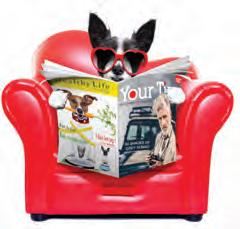

Things that involve multiple cognitive skills are especially helpful – dancing for instance involves movement, coordination, planning and social skills among others. Once you have got to a point when it is no longer hard then you should think about adding in something else new.
Kailas Roberts is a psychogeriatrician and author of Mind your brain

The Essential Australian Guide to Dementia now available at all good bookstores and online.

Visit yourbraininmind.com or uqp.com.au

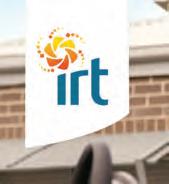






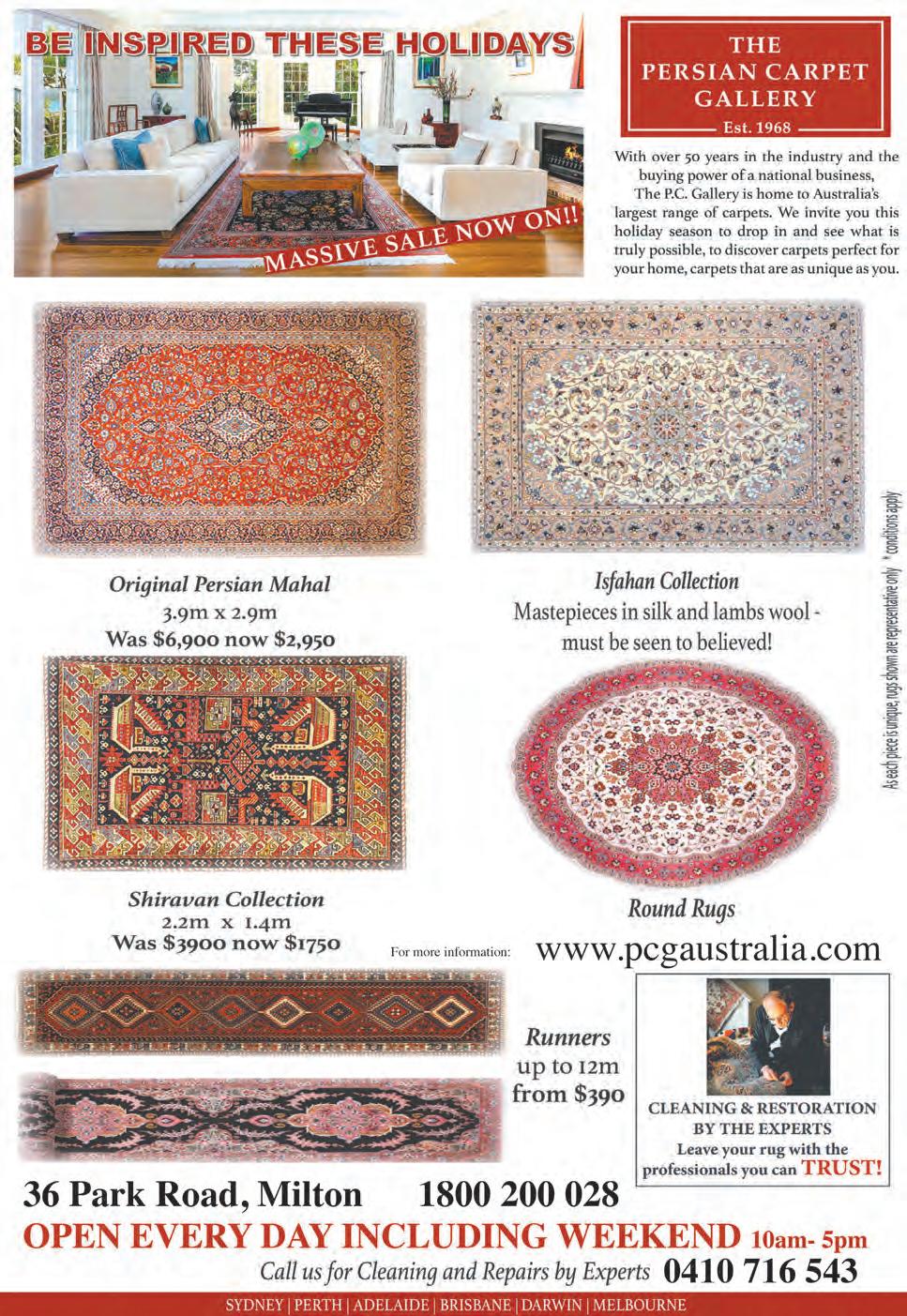




Good circulation becomes even more important as you age. TRISTAN HALL shares some easy ways to improve circulatory health.

The cardiovascular system is remarkable. It delivers oxygen and nutrients to all the cells in your body, then collects and removes carbon dioxide and waste products.
It works silently and efficiently every day of your life. But it can be strained. If you smoke, have diabetes, are overweight or sit down for long periods, circulation can suffer.
Poor circulation is first noticed in the legs and feet which are furthest from the heart. Reduced blood flow decreases oxygen to the brain, causing dizziness and leading to falls.
Your heart has a lot of work to do. It pumps about five litres of blood a minute. But did you know it has some help?
Calf muscles pump deoxygenated blood back to the heart. They have one-way valves that stop blood flowing back to pool in your lower legs.
When you walk or exercise calf muscles, you are activating these extra blood pumps. Don’t wait for cold feet –help yourself to better circulation:

1. Get out of the chair. A review of 22 studies of the lifestyles of older adults found they spent 65-80 per cent of their waking hours sitting, reclining or in
low-energy activities. Set a timer for 30 minutes when you sit down. When the timer goes, stand up and move for a few minutes. Check the mail or march on the spot. Anything will do, just get moving.


2. Calf raises. Stand with feet shoulder width apart. Hold a wall or stable surface if needed. Lift heels off the ground and drop them down again. Do this quickly 10 to 15 times. Build up to three sets and repeat three times a day. This is an ideal exercise to do in a shopping queue or while watching television.
3. Walk often. Walking increases blood flow to your legs. Gradually extend the time you walk each day. Look for ways to build incidental walking into your routine – walk a dog or park a block from your favourite coffee shop.
4. Chair squats. Stand sideways to a dining chair with feet shoulder width apart. Hold the chair and lower into a squat. Take care knees stay behind toes and spine stays upright.
Do this squat slowly and mindfully. Start with 10 and work up to three sets three times a day.
Tristan Hall is an exercise physiologist with Full Circle Wellness. Call 0431 192 284 or visit fullcirclewellness.com.au

MANY people have written plenty of words about the importance of belonging to something. Social contact is important. It is believed that people who have company or belong to a group and meet regularly, can have a healthier life. It has a positive effect on their life.
Take for example a person who is isolated, lonely or both. They miss social interaction and the friendliness and support that comes from being with others.
Regardless of the type of group, the companionship can be comforting and supportive. The benefits of being in a group or a family also extend to varied experiences and continued education.
My wife and I live in a unit complex of about 80 residents and, like most in the complex, children have departed, and we are in our late 60s or older.
Residents, both men and women, regularly catch up for lunch at local cafés or restaurants.
We look forward to these as we seldom see our neighbours as we go about our daily business.
We may only pass one another in the lifts from time to time so the catch-ups are great to get the latest body corporate news and what’s going on for other residents and their health.
With people here in the prime of their
















life, it is important we keep a community feel about where we live.
A growing number of retirees have recently returned to work, often due to the state of the economy, but also because they miss the workplace, and being part of a team. It may be natural to reduce our interaction as we age, but often this can be replaced by joining the local bowls, bridge or community support group.
Your membership may not only be greatly appreciated, but you can also do your mental and physical health a favour.
Tom Law is author of Tom’s Law Fit Happens. Visit tomslaw.com.au

Tom Law has two copies of his new book, Tom’s Law: A Life Fit for Living to give away. The book moves from Scotland in 1955 to present-day Australia, in a short story format. It covers the experience of the “10 pound Poms” and a new way of life for the Law family, from childhood to adulthood and all the emotions, adventures and life happenings along the way.
To enter the draw to win a copy email your name and address to tomslaw@hotmail.com
The Healthy Ageing Forum 2022 gives you the opportunity to learn and engage with experts from UniSC, the Sunshine Coast University Hospital and other health practitioners who will showcase the latest research on healthy ageing.

Date Saturday 26 November 2022



Time 8.30am – 3.45pm (registrations commence at 8am)

Location Auditorium (in Innovation Centre), University of the Sunshine Coast, Main Entrance, 90 Sippy Downs Drive, Sippy Downs (free parking)
Cost $15 (plus booking fee), includes morning tea and lunch
Bookings Visit eventbrite.com.au or scan the QR Code below (bookings are essential as there will be no tickets available at the door)





VISITORS with stamps or a collection and wondering about the value are invited to Caloundra Stamp Club’s 42nd annual stamp fair for an appraisal by expert club members or a professional dealer.
Members of clubs from around south-east Queensland will be attending when activities will include viewing and purchasing stamps and philatelic items from Club Exchange Books, professional dealers and from a bargain table.
A “sale by tender” and the bargain table will be an opportunity to pick up a bargain or to find the stamp or set of stamps to fill a gap in a collection.
There will be lucky door prizes and a multiple raffle prizes and on-site refreshments. Ample parking is available
with ground floor disabled access.
The Caloundra Stamp Club meets on the fourth Thursday of each month, January to November, 1pm at the Bellvista Community Centre, Lomond Cresc, Bellvista.
Activities include stamp trading through club exchange books, bargain table to sell surplus items; mini-auctions; Stamp of the Month competition; quizzes; annual philatelic challenge and stamp fair. Visitors always welcome.
Kawana Community Centre, Naminya St, Buddina November 19, 8.30am-3.30pm. Entry free. All welcome.
THE Probus Club of Currimundi
Combined invites retirees and seniors to its monthly meeting to hear an interesting guest speaker, meet the friendly members over morning tea and find out about the club’s many activities.


The Probus motto of Fun, Friendship and Fellowship reflects the importance of social interaction in the lives of seniors and retirees and the benefits of making friends and chatting with people of similar age and situations in life.
The club offers a wide range of regular activities between meetings, such as golf,
tennis, walking group, book club, craft group, day trips, lunches, dinners, coffee and chat mornings, and breakfast by the beach.
Progressive lunches, camping and caravanning trips away and occasional long weekend trips to interesting locations are also on the agenda.
Meetings are on the second Wednesday of each month, 9.30am11.30am, at Caloundra Indoor Bowls Club, Bourke St, Golden Beach.
Call Ann 0409 120 586 or visit probuscurrimundi.org


A. Traditionally platinum was often twice the price of gold. Platinum is a naturally occurring very dense white metal. While I’m familiar with it’s use in jewellery, it is it’s other uses which has driven it’s price DOWN in the past couple of years!





There is approximately 3 to 7 gram of platinum in each catalytic


















2 Allen Street, MOFFAT BEACH 5491 1733
Open 9am to 5pm Weekdays sunstatejewellers.com.au

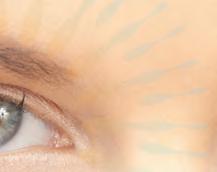




As heard on Sunshine FM
IF you enjoy writing and would like to get together with others, the Sunshine Coast Writers’ Group meets twice a month.
The group encourages writers of all styles to develop their skills by providing constructive and encouraging feedback when it’s sought.
Some write poetry, others prose. Authors read their work to the group with poetry readings limited to 42 lines and prose limited to 1000 words.
Some works are light and humorous,
Further information 5492 7233 or 0417 720 581. others deep and meaningful. It’s up to you! Meetings are at 12.45pm on the first and third Monday of each month (February to November) at the North Shore Community Centre, 701 David Low Way, Mudjimba.
Visitors are welcome to come along for a free trial meeting and a cuppa. Annual membership is $26 plus $4 a workshop to cover expenses.
Visit sunshinecoastwritersgroup. weebly.com or on Facebook.
converter. A catalytic converter is a chamber used in unleaded vehicles to “filter” exhaust into less harmful compounds. Manufacturing of new vehicles is moving to different technologies –like electric vehicles, so demand for platinum is easing, resulting in a price drop.
MORE than 280,000 species of orchid have been recognised and named around the world, and Nambour Orchid Society’s last show for 2022, will focus on species.

Orchids on display will have had global origins and not been hybridised –first collected from all points of the globe.


Many of the orchids on display will focus on South-East Asian and Australian species as they are more adaptable to the climate. There will be benched species orchids on display and orchid and foliage plant sales as well as raffles.
Robertson Orchid, Orchid Mania, Rolin Farms Orchids,Woolf Orchidculture and Orchidaceous supplies will attend.


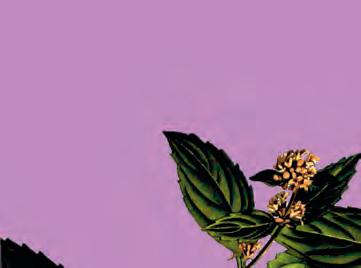
There also will be an opportunity to learn more about orchid cultivation and how to obtain the best from your orchids.

Visitors are always welcome at cllub meetings. For growing tips and meeting times, visit nambourorchidsociety.com
Buderim Uniting Church, Gloucester Rd, Buderim, November 5, 8am-4pm Admission $4
ARTS and craftspeople have been working for months making beautiful presents for the annual Buderim Christmas Fair.
There will be art, craft, plants, culinary treats, home décor, handcrafted jewellery, books, home décor, and fashion for sale to solve Christmas gift shopping.
This is a combined event with the Buderim War Memorial Hall, Buderim Craft Cottage and the Buderim Library, hosted by Buderim Lions.
Parking is available behind the hall and at the school for a $2 donation.
War Memorial Hall, 5 Main Street, Buderim, November 25, 10am2pm(Craft Cottage only); Saturday 26, 8am-2pm. Free entry.

THE Probus Club of Caloundra 86 is
fellowship and friendship.
NAMBOUR 90 Probus club’s annual breakfast at Muller Park was enjoyed by 77 members and affiliates.
for
Meetings are at the Rumba Resort, Caloundra, each month and members engage in a range of activities.
Sponsored by Rotary, Probus is a 100 per cent social club for retired and semi-retired people and has more than 4000 clubs operating around the world.
probusclub86@gmail.com or call 0480 184 730.
With the three main elements of Probus – fun, friendship and fellowship – they came together for a relaxed morning. One lucky member celebrated his birthday surrounded by a crowd of Probus friends.
An enthusiastic bunch of workers assembled at 6am to set up barbecues and a marquee and commence food preparation.
Probus Nambour 90 meets on the fourth Monday of the month at Palmwoods Bowls Club, with an interesting guest speaker and is a great way to meet new people.

Call Bill 5441 1364.
GLASSHOUSE Country View Club members enjoyed a morning in Turner Park, Beerwah for their October outing.
The weather was fine for morning tea, games and catching up.
Interesting speakers have been Neil Halpin who spent many years with the SES Glasshouse Mountains rescue team, and Sandra Harding who spoke on the education system. Speaker for November is a representative of St Vincent DePaul.
The Christmas party will be held on December 7, at Glasshouse Country RSL, 1 Reed St, Glasshouse Mountains.
Call Joy 0457 413 651 or Janet 0448 845 303. Visit view.org.au or follow on Facebook.
An obligation-free appointment with our aged care advisor to help navigate you through this process.
A Strategy Paper involves a review of your current
position and provides you with up to 5 scenarios and compares cashflow effects of each option.
complete
the necessary
BRUCE McMAHON takes an MG ZS for a spin.
adults and a fortnight’s luggage, with room for tourist trinkets.

It hums along at 3000rpm for 120km/h in top gear with fuel use averaging 7 to 8 litres per 100km.
It’s all easy and comfortable enough with Apple CarPlay to look after music. Maybe next time I’d download Top End-tinged tunes: Graeme Connors’ Head A Little Further North, Warumpi Band’s My Island Home, Neil Murray’s Good Light in Broome as headliners.

fast Alfa Romeos, Celica GT-4s and chasing Cannonball Runs among yesteryear’s adventures – but 130km/h is fair enough for safety and fuel consumption.
And the MG is okay with this, still averaging around 8 litres per 100km even with dry season headwinds.
the face of it,
out to Kakadu, down to Katherine then back north-bynorth-west to Litchfield and Darwin.
clean, white (of course) and newish MG with little drama from the hire crowd –$1843 for 13 days from Bargain Car Rentals – off to find the hotel and down to the Trailer Boat Club for the famous Timor Sea sunset.

The automatic five-door is an easy town car, handsome enough and simple to operate; no great complications. Off to Mindil Beach markets to close out the weekend.
The MG sits okay on these benign roads – good bitumen, long straights and gentle curves. Ride comfort’s not bad but then again the tar is in good nick and we’re staying clear of unsealed roads, but there’s a fair whack of road noise.
Indicators are on the left (a bit close to the cruise control wand) while the air-conditioning looks after 30-degree days and it’s old-school – turn one knob to cool or warm the cabin, turn another to increase fan speed. Likewise, no distracting noises or tugs on the steering wheel for hitting a white line.
Some may miss today’s driver aids. Not here.
But here’s the thing: 1.5 litres and 84kW need a deal of coaxing to overtake a 53m road train or attack a rise in the landscape. (Not sure how a ZS would handle four adults and luggage up Cunningham’s Gap). It steers well with decent balance and a little understeer.
On to Katherine and Litchfield (the only time a four-wheel drive would’ve been handy to access the magical Lost City) and back to Darwin.
So, some 1700km, one small windscreen chip plus a whodunnit shopping centre carpark scar (memo: take full insurance next time) and the MG ZS was back in town.
It was surprisingly comfortable and trouble-free if perhaps not quite to the standards, performance or prices, of equivalent Mazdas, Kias et al.
for a day and then over to the Tiwi Islands. So, a no-fuss
up for a

Monday it’s out of town, east to Jabiru. The MG’s a good size for two
Now a 130km/h sign. Not as exciting as the Territory’s old open speed limits –
But you’ll never-never know if you don’t have a go.

tool developed to assess whether individual pets can safely be accommodated in aged care homes, will ease the stress for seniors moving into residential care.
A 2018 study found that only 18 per cent of residential aged care facilities in Australia allowed residents to live with a pet, despite 64 per cent of Australian households owning a pet.

Almost one in two people over the age of 65 have pets but many relinquish them as they age because of fears about who will look after their pets in the event of illness or death, or they enter a care home.
A team of academics, veterinarians, health and consumer representatives has now devised a process to assess different risks for both people and pets, focusing on dogs, cats, small mammals, birds, and fish.
Project leader, University of South Australia pet researcher Janette Young, says the tool assesses a wide range of risks, including allergies, bites/scratches, falls, transmission of diseases and animal stress.
“We want to support older people to keep their pets at an extremely stressful life stage and also reduce the number of pets who become homeless or need to be euthanised when their owner is no longer able to live independently,” Dr Young says.
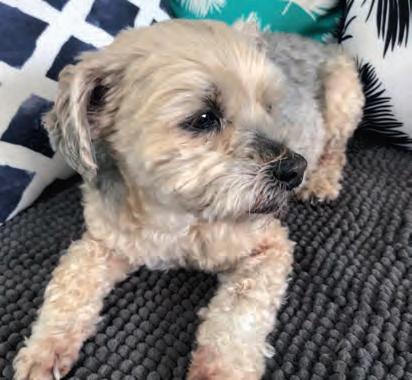
Three main risks have been identified



– from humans to animals and vice versa, and risks from animals to animals.


Levels of risk for individual species are rated high to low, assuming pets will be kept in their owners’ rooms, or on a leash when outside or in a communal setting.
“Good hygiene is essential, and most risks can be managed in an aged care home if scrupulous cleaning practices are followed,” Dr Young says. “However, there are other considerations, including the likelihood of an animal causing a fall or biting/scratching a resident, and human allergies to different species.”
Veterinarian advice includes assessing the risk of residents inappropriately or over feeding pets, animals gaining access to resident medication and even the possibility of animals being injured by other pets on the premises.
The tool proposes steps to address risks.
“The tool is not about guaranteeing that people can bring their loved pets into aged care; this may not be the best option in the end for people or their pets,” Dr Young says. “However, it enables people to work through this as a realistic option.”
Although developed in Australia, the project was funded by the Society for Companion Animal Studies in the UK and is intended to be used worldwide.
Visit scas.org.uk
THE benefits of pet ownership are well recognised and there are pets who need owners too. The Sunshine Coast Animal Refuge, established in 1979 to provide temporary refuge and find new homes for abandoned, abused, stray and unwanted cats and dogs, this month introduces:
Soxs, a female domestic short hair aged 12 months. She is used to being inside and outside, can be social and will greet visitors. She has lived with other cats and has been around kids. Soxs gets stressed around dogs, so we are looking for a home with no canines. Adoption fee $125

Sophie is a 12-year-old Silky Terrier x Maltese. For a senior she still has oodles of energy and loves her walks! She is currently in a foster home and will be available to adopt soon. Sophie likes company and is toilet trained. She would be happy with another dog or cat for company. Watch the website for her to pop up for adoption.
All cats and dogs are vet checked, vaccinated, wormed, desexed, microchipped and medically treated if necessary. The refuge at Sippy Creek Road, Tanawha (adjacent to the Council Pound) is open Tuesday to Sunday, 10am-5pm. If you’d like to adopt call 5494 5275, email office@ sippycreek.com.au or find more details at sippycreek.com.au
If you’ve spent your life talking about the problems of the world and you’re still waiting for something to happen, JUDY RAFFERTY suggests that retirement is the perfect opportunity to be bold and do something about it.

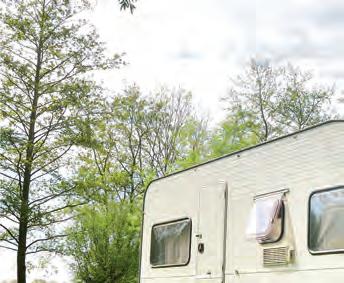

People sometimes say to me that they feel as though they are waiting for something in their life. What they are waiting for is unknown.
Sometimes I hear someone say that they feel like they are living someone else’s life or just marking time.
It can feel like waiting for real life to begin. Or like living on the surface.
Usually, the person feels lucky to have a comfortable life and is a bit embarrassed to be thought to be complaining.
We know that it is important to feel purposeful in life. Having a sense of purpose makes life feel meaningful and helps us to be engaged rather than drifting.
Unfortunately, life does not always provide us with purpose and we have to go out and find it. This seems a trifle artificial and can also make us wonder why we would seek it out.
Engagement with something you believe in nearly always comes at a cost … time, money, emotion. It is a gamble, but the hope is that the cost is outweighed by the benefit.
It seems to me that once we reach
retirement age we are well placed to live boldly.


Part of that living boldly can be to fight for what we believe in, perhaps on an issue that we think might make the world a better place. Fight might be too strong a word – try advocate, agitate, speak out, stand up …
I recall a Boyer Lecture given by Shirley Hazzard in 1984. Part of her lecture contained a very simple message, and I was still young enough to be impressed by it. Apologies to Ms
Hazzard if I am misquoting her (it was a long time ago).
Effectively it was a call to action. She said that we waste a great deal of energy sharing our gripes about the world over dinner or coffee, yet we do nothing about those gripes. I hear so many conversations expressing disappointment, dissatisfaction, disbelief at a myriad of different issues at large in our world.
Surely in retirement we can act. Recently I met with a group on retired
teachers. They spoke with deep concern about changes in the education system.
I pointed out that as they no longer have to worry about their jobs they could band together to act for change. This idea was not warmly met.
There are so many issues of concern that it can seem overwhelming. Where does one start? Perhaps it is a process of choosing just one and diving into it. Mine is billboards.
I know, who cares? I do. Why are we subjected to visual pollution?
Don’t wait for purpose to find you. What will you spend your energy on? Join others, create your own group or act alone.
Unfettered by work, able to speak freely without impacting employment, elders can be a powerful voice in any community. Retirement is a wonderful opportunity to live fully and boldly.
Judy Rafferty is the author of Retirement Your Way, A Practical Guide to Knowing What You Want and How to Get It, at all good bookshops and online.
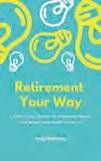
With the end of the year coming up, it’s a good time to reflect on plans for the future, and what changes need to be made to improve lifestyle. DON MACPHERSON discusses retirement villages.
health issues increasingly significant, or even lack of community and communication could becoming burdensome.
seniors, one of the most relevant things to think about, especially while the family is together, is whether current accommodation is suitable, and if changes need to be made.
If you haven’t had everyone together for a while, they may have noticed changes that you haven’t felt – basically, are grannie and grandpa as sprightly as they were last year.
Perhaps the time has come to consider moving into a retirement village, over 50s resort, or even aged care.
Such decisions are not easily made, and there may be some initial resistance.
Over time though, there is usually recognition that the house seems bigger, the maintenance workload greater, the



Retirement villages and over 50s resorts inevitably involve “downsizing” in accommodation but often an “upsizing” of community involvement through the retirement village or resort. In fact, some in the industry call it “right sizing”.
If that move has already been made, or even if the stay “at home” has been extended, often health issues are significant enough that a move to aged care becomes necessary.
A decision to move into a retirement village, over 50s resort or aged care is best done as a whole-of-family decision, with the involvement of the seniors, as well as their supportive children (themselves often in their 50s or more).
Commonly it is the children who first notice that Mum and Dad/Nan and Pa are only just managing, and that a change from the home to a retirement village, over 50s resort or aged care may be

WITH the cost of Medibank, Bupa, HCF and NIB private health cover rising this month, consumers are being encouraged to check policies for possible savings.
More than one in three of the 11.5 million Australians covered for hospital treatment, have purchased the most expensive, maximum level of cover with no exclusions.
These Gold policies can be almost twice as much as the cheapest Silver policy offered by the same provider.
Health insurance expert Uta Mihm of consumer group Choice says it is vital to check you pay only for what you need.
“In most cases, the only people who are getting the best deal from being on a Gold policy are those who have a chronic illness, need psychiatric treatment in
hospital, or weight loss surgery,” she said.
“That leaves many paying more than they need for their health cover.”
Choice’s analysis of current health insurance policies found that downgrading from a Gold policy to a Silver or Silver Plus policy could save a single person up to $1823 a year with the same provider, or potentially more if you shop around.
“For many people, a Silver Plus policy that includes cover for rehabilitation in a private hospital is a very good option and will offer you better value than a Gold policy,” she said. “A common situation is buying coverage to have surgery, but then continuing to pay once the situation has changed.”
Visit




timely and beneficial. Such a move is a significant legal decision as the terms of retirement village, over 50s resort and aged care contracts are complex, lengthy, and onerous.
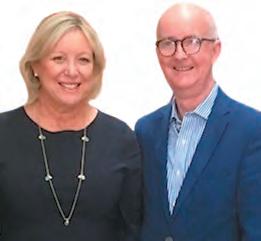
It is essential that seniors and their families understand the ramifications of what they are signing, and what it means to them down the track.
Generalist advice isn’t good enough.
There have been recent changes in the law relating to retirement villages. To learn more, and for a list of 24 points to consider when considering a move to a retirement village, visit our website.

Don Macpherson is an expert in elder law at Sunshine Coast Elder Law. Call 1800 328 952 or visit sunshinecoastelderlaw.com.au
Don Macpherson is an expert in elder law at Brisbane Elder Law. Call 1800 328 952 or visit brisbaneelderlaw.com.au
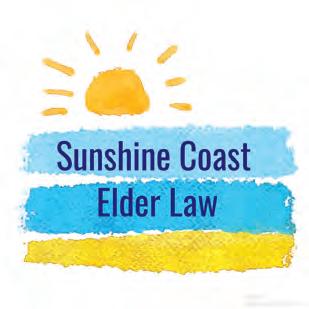
Annelise comes to EONLife Wellness
the
to HeartHQ with a
of
and research
She is passionate about the translation of research,

and
Annelise values individualised and
the
needs and concerns.
care
patients to understand
supports people to
be the healthiest

NEW research by the Australian Podiatry Association reveals that almost two in five Australians (had lifethreatening health issues identified by their podiatrist.




The research showed Australians who had visited a podiatrist for foot pain were unexpectedly found to have other life-threatening health issues, including circulatory issues, heart problems, and diabetes (including risk of amputation).

Podiatrist Charlotte Bodell said foot pain could be symptomatic of a much more serious health issue that podiatrists were trained to assess.
“Seeing a podiatrist could ultimately save your life, as our recent research shows. We often see patients who have no idea they have an underlying health issue, other than experiencing foot pain,” she said.
“People may not realise just how powerful the foot is when it comes to assessing serious underlying health conditions.”

The research found that 20 per cent of Australians see a GP for foot pain, despite podiatrists being the foot health experts and available via Medicare; that 59 per cent visit a podiatrist because of pain; 91 per cent said their condition/ movement improved and 55 per cent have never received advice on correct footwear.
“Podiatrists are experts in foot health, they know and help you understand and manage your feet so they can support you in leading a happy and healthy life,” Charlotte said.
“Your feet fit into a much biggerand deeply important - picture. They can underpin your entire wellbeing.”
Visit foothealthaustralia.org.au
HEART disease is Australia’s number one killer, with one Australian dying of the disease every 18 minutes.
The good news is that changes to lifestyle will reduce the risk of a future cardiac event.
Making some simple everyday changes can really make a huge difference to heart health and prevention of heart disease.
When it comes to overall health, what we eat plays a major part in how well we feel and in prevention of chronic health conditions.
Food is fuel for the brain and body, and directly impacts the function of your entire system.
The Mediterranean style of eating has shown to be beneficial in reducing risk factors for heart disease and diabetes and may also improve mental health.
The Mediterranean diet originates from countries bordering the Mediterranean Sea, and is based on common foods eaten in this region. It covers all five core food groups, in varying amounts.
Common principles include eating higher amounts of plant-based foods such as vegetables, fruit, wholegrains, nuts, seeds, and legumes.

Olive oil is used daily and is the primary source of dietary fat.
Fish and poultry are consumed in moderate amounts and dairy products such as yoghurt and cheese, are consumed in low to moderate amounts. Red meat is consumed in smaller amounts.
In general, this style of eating should be treated more as a lifestyle choice.
It can be maintained and sustained, so can be followed long-term to keep your heart healthy.
Dietitian Annelise Jefferies, a consultant at EONLife Wellness, tailors nutrition plans to suit individual needs. Call 5414 1150.

At Kruger Law, we often receive questions about Estate and Probate disputes.
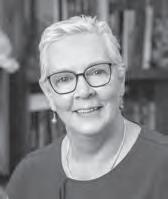

This article answers some of the more common ones.
Question 1: Can I challenge a Will if I have been left out of it?
Answer: Yes, but only if you’re a…
• Spouse – including a de facto
• Child (including step-child); or
• A dependant of the deceased.
Question 2: How do I challenge a distribution under a Will?
Answer: Time periods apply, so it is important you seek legal advice.
Generally, there are two initial steps:
• Step 1 – A challenger must give notice to the executor of the intention to challenge, within six months of the deceased’s death.
• Step 2 – A challenger must commence procee dings within nine months of the deceased’s death.
Question 3: What does the court look at when deciding whether a claim should succeed?
Answer: The starting point is the level of need of the challenger. If a challenger demonstrates financial need, how much of the estate they ought receive involves considering:
(a) the size of the estate
(b) the nature of the relationship between the challenger and the deceased; and
(c) other “competing” claims.
You can find related articles on our website.



Chronic knee pain doesn’t have to be met with surgery or medication. Radiofrequency ablation is a non-surgical procedure that involves the insertion of a needle-like probe into the skin. This probe delivers radiofrequency waves to target nerves that are causing pain.
Radiofrequency ablation is a safe and effective procedure with minimal recovery time. The results are demonstrating 12 months pain relief and functional improvement specifically for knee pain and osteoarthritis. RFA is especially beneficial to those seeking an alternative to surgery and are not getting the desired results from non-operative measures such as injection therapy and lifestyle modifications.

The procedure is completed in approximately 20 minutes, with sedation. Unlike surgery RFA involves no incision. The patient may experience some discomfort at the site for a short period, but this discomfort can be treated with common over-thecounter medication.
Sunshine Coast Orthopaedic Group has a team of health professionals with knowledge and expertise in radiofrequency ablation. Contact www.scorthogroup.com.au to find out more

Melanoma, a disease that is almost always curable if caught early, is predicted to claim 1300 Australian lives in 2022.
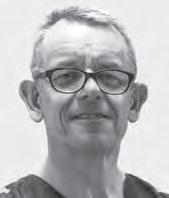
To keep safe, we need to monitor our skin for suspicious changes.
Many melanomas appear as a new spot while others develop from a seemingly innocent mole that changes in shape, size, or colour over time.
Monitoring moles is not easy, especially if you have lots of them (which puts you at higher risk of skin cancer).
Changes are often subtle and can occur in places we can’t see.
Total Body Photography (TBP) keeps track of your moles over time and identifies cancerous lesions before it’s too late.
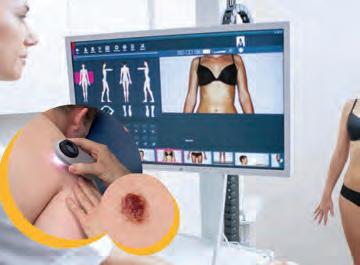
In combination with a full skin cancer check, TBP is the best method to identify skin cancers earlier, remove suspicious lesions faster in less invasive procedures, and provide ultimate peace of mind to patients at high risk.
Adding Total Body Photography to your past or upcoming skin check allows the earliest melanoma detection, and this could save your life.
I don’t know about you but tipping always makes me anxious – is it too much or not enough, not necessary at all?
How much to tip is one of the first things to work out and this differs depending on who is getting the tip.

In South-East Asia, tipping is common and when it comes to a tour guide, I work on about 10 per cent of the cost of the tour.
If they have gone over and above in their service, you may wish to give them a little more.
In a restaurant it is about the same at 10 per cent. It is important to make sure you give the tip directly to the waiter as otherwise they may never receive it.
For taxi drivers or transfers to your hotel it is much less, and a $1 or $2 tip would probably be sufficient.
A similar amount would apply to the concierge at your hotel. Work on about $1 per bag tip.
Street Vendors and coffee houses often don’t expect tips but are grateful if you do.
If by chance the vendor does return your money, allow them to refuse taking the tip and instead offer a sincere thanks.
Often in the rural areas this will be the case and is welcomed more than any tip.
My personal tip:
Tip the housekeeping well on the first day and each day thereafter you are bound to get special attention for your entire stay.
INNOVATION
5438 8889 bit.ly/skincheckbirtinya
informative
inspiring,
Retirees George Oliver and Judy Fuller, homeowners at GemLife resorts on the Sunshine Coast, appear in the first episode, alongside experienced presenters Leigh Muirhead and Michael Croaker.

The cast also includes dietitian Carly Barlow, fashion consultant Tasha Homan, travel host Graham Moore and technology guru Stephen Fenech who appear in each episode to give expert advice.

In the first 25-minute episode, Mr Oliver works with the dietitian to address his health goals, which include fitting into his suit for his son’s upcoming wedding.
“I’ve had a suit in my cupboard for a few years and amazingly it shrunk,” he joked. “Using the tools Carly gave me, I’ve managed to lose my middle spread, despite missing the gym during winter.
“There are a lot of health-conscious people at this stage of life because we’ve all been touched by some sort of medical drama – personally or through friends or family.
“Even though you’re aware, it helps to
get a reminder and a bit of a shake-up. I hope people can take something from my experience on the show and improve their own health.”
The first episode also features a makeover and wardrobe update for GemLife Maroochy Quays homeowner Judy Fuller, who said the experience had changed her attitude towards dressing.
“I wouldn’t have had the confidence to wear bright things before the show, but I do now. And with the beautiful climate here on the Coast and the wonderful lifestyle at GemLife, I feel fabulous,” she said.
Living Proof is created by GemLife, developers of premium over-50s lifestyle resorts, giving residents a chance to star in their own show.
GemLife CEO Adrian Puljich said the company had engaged some of the country’s leading experts to provide up-to-date, tailored content in an informative and entertaining format.
“We have wonderful communities at GemLife and we hope Living Proof conveys a sense of that,” he said.
“We’re thrilled with the quality of the production and excited to share it with people Australia-wide.”
To watch, visit gemlife.com.au/ livingproof
FROM her beginnings on a cattle property in rural Queensland to owning hair salons in Gladstone and living in China, Vietnam, India and Saudi Arabia, Sandy Shield has had an interesting life.
She took the plunge and decided to write and self-publish her memoir, Here I Go Again, as way of chronicling her travels, many of them following her husband of 42 years, former BHP engineer Tony, on his many overseas postings.
“In the many hours I spent recording my story, I still kept needing to push aside the ‘people won’t be interested’ thoughts,” Sandy says.
“Hopefully the ‘of course they will’ thoughts won the day and my story is an interesting one and I actually enjoyed its therapeutic value.”
In the couple’s (pictured) latest chapter, they are preparing a move to Stockland’s B by Halcyon in Buderim, a far more relaxed lifestyle than some of their previous locations.
“Considering the quite different life I
have led, I still consider myself very lucky that a young engineer named Tony walked into my salon for a haircut,” she says in her book.
“A more caring, kind, understanding, generous, (a little quiet) husband I could not wish for.”
and garden maintenance and transport to ensure that extra support is available – and it always comes with a smile and a chat.
Suncare support worker Carrey goes home every day knowing she has made a real difference in the lives of those in her care.
Before becoming a Suncarer, Carrey knew she wanted a job that was fulfilling and gave her a sense of purpose.
SINCE 1970, Suncare has been ensuring that for residents of central and south-east Queensland, getting older doesn’t have to mean moving into residential aged care.

Dedicated Suncarers specialise in the delivery of in-home services for older Australians.
From everyday services such as housekeeping and meal preparation, to a lift to the shops or a garden tidy-up, the Suncare team knows how to optimise funding and options for their clients.
Services include housekeeping, home
“I met a couple of people who worked for Suncare and they seemed to love their jobs, and they were also really happy, outgoing people. I knew immediately that’s what I wanted to do,” she said Carrey.
“I am proud to be a Suncarer and when I go home, I feel like I have really made a difference.”

As a growing organisation, Suncare is recruiting volunteers and employees for a range of roles that help older Australians fulfil their wish to remain living independently at home.
Visit suncare.org.au or call 1800 786 227.

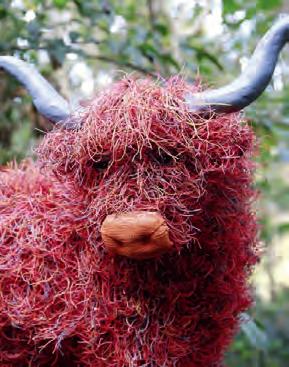
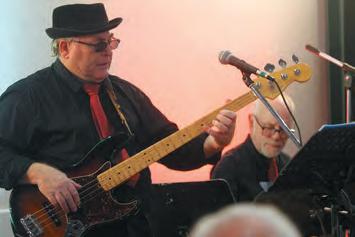
THE Jazz and Blues Collective waraps up 2022 with a special blue Blues Christmas. Chameleon is made up of international artist Col Atkinson on electric bass/vocals; and friends Dave Spicer, who has supported some of Australia’s biggest talents, on piano; fired-up sax player Adam Thomas and drummer Rodney Ford, a master of all genres and rhythms, and vocalist. The virtuoso quartet play a selection of contemporary jazz, swing, jazz Latin and funk.
A coffee van will be on site from 12.30pm and there’s a BYO liquor licence so bring your own food and drinks.
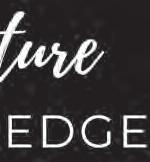
Millwell Road Community Centre, 11 Millwell Rd East. Maroochydore.
December 4, music 1.30pm-4pm (doors open 1pm).

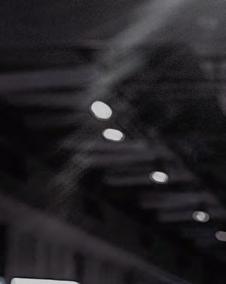
Tickets $26, concessions $24. Bookings ticketebo.com.au Call Graeme 0417 633 734.











THE 10th annual Fair Day Out celebrating inclusive communities with free creative performances and more than 30 market stalls of creative wares produced by people with disability, is coming up.
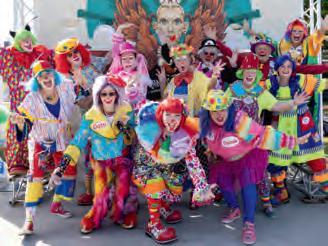
Local musicians, The Outsiders, who have performed at the event every year, will again bring their original works and and a big rock sound. The Self Advocacy Anthem is one of their more recent original compositions.

A Fair Day Out is for everyone, regardless of ability, and recognises the diverse talents of the community.
Majestic Theatre, Pomona, October 15. Eudlo Hall, October 22. Maleny Community Centre, October 29. Tickets $30 and $25 concessions. Visit emilymaguire.com.
COOLUM’S popular live variety show Sounds of Celebration promises a fun afternoon of entertainment featuring Waves of Harmony and Coolum Voices.
There will be a multi-draw raffle and door prizes. All welcome. Proceeds will benefit St Vincent de Paul Coolum. St Peter’s Church, Elizabeth St, Coolum. November 6, 2 pm $15 includes afternoon tea.


THE Sunshine Coast Symphony Orchestra (SCSO) will launch the festive season in style, with A Night at the Proms
In Albert Hall Proms tradition, the orchestra will celebrate with an all-British program of music and vibrant colour.
This year’s concert will have special significance for musicians and audience, as it will be Adrian King’s final concert as conductor after 15 years as the orchestra’s musical director.
His successor will be Dr Fletcher Mitchell, an international euphonium soloist based in Brisbane and the Sunshine Coast, who has been a guest soloist, conductor, adjudicator, and educator in more than 40 countries.
He is the euphonium lecturer at the Queensland Conservatorium of Music, low brass lecturer at the University of Queensland and holds a PhD for his research into Australian repertoire for the solo euphonium.
Dr Mitchell will mark the beginning of his permanent association with the SCSO by performing at the Proms concert.



A Night at the Proms will be the final concert in the orchestra’s 50th anniversary year and will also showcase guest soloists.

Violinist Rhys Williams will play the achingly beautiful Lark Ascending, while soprano, Judit Molnar will sing perennial favourites Jerusalem, Fantasia on British Sea Songs and Pomp and Circumstance.
For music lovers, or anyone wanting to venture into live performances of orchestral music, A Night at the Proms promises to be a high-spirited introduction to the festive season.

Venue 114, 114 Sportsmans Pde, Bokarina. December 3, 7pm

Tickets $40, concessions $35 Bookings. sunshinecoast symphonyorchestra.com
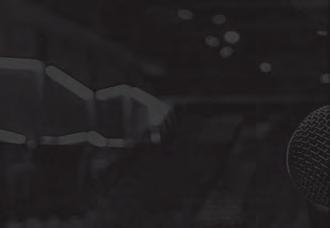



DO your Christmas shopping the easy way at the Sunshine Coast Arts and Crafts Group’s annual Christmas fair in Montville. There will be plenty of local hand-made gift ideas for sale, then take a break at the café where homemade goodies will be served. Try your luck in the raffle to win a Christmas hamper valued at $200. Montville Village Community Hall. November 5-6, 9am

ORIANA Choir and the Brisbane Chorale join forces to present one of the great masterpieces of musical history, Haydn’s The Creation
Conducted by Emily Cox, the combined chorus will be joined by Brisbane Philharmonic Orchestra and soloists soprano Leanne Kenneally, tenor Tobias Merz and bass Jason Barry-Smith. Haydn’s monumental oratorio The Creationdepicts and celebrates the creation, wonder and beauty of the world.
The musical wit and inventiveness as he describes a whole menagerie of creatures with a great sense of humour is delightful and the glorious and optimistic music is uplifting.
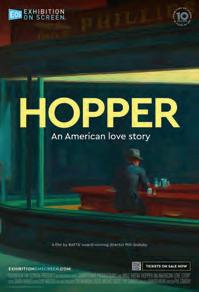
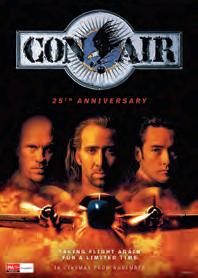


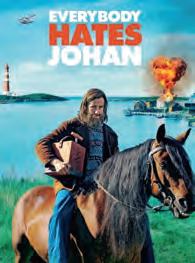

“Oriana is so excited to be joining with Brisbane Chorale for this once in a lifetime opportunity,” president Melissa Innes said. “A work of this scale is something rarely seen or experienced.”

Creation is one of the most popular of all oratorios – even the first public performance in Vienna in 1798 sold out in advance.
Oriana Choir began in 2005 and in 2006 competed in ABC Classic FM’s National Choir of the Year competition, placing second in the Queensland finals.

Venue 114, Bokarina. Sunday November 13, 3pm. Tickets 4mbs.sales. ticketsearch.com or call 3847 1717. Visit oriana.org.au


SCULPTURE on the Edge has moved to Flaxton Gardens and now has the capacity to display indoor and outdoor sculptures across a variety of media.
The Sunshine Coast has one of the highest concentrations of artists anywhere in the world, so this annual Arts Connect sculpture festival keeps growing.
Last year it attracted about 7000 visitors and this is set to grow to 10,000 this year.



The event is now literally on the edge, with Flaxton Gardens providing views of the coast from Noosa to Caloundra. It is accessible and has plenty of parking, ramps, flat outdoor areas and an airconditioned indoor space.
Indoor and outdoor sculptures from one gram to more than a tonne will be exhibited.
Arts Connect is a Sunshine Coast based and volunteer-run, art organisation with about 200 members working in all areas of visual art.
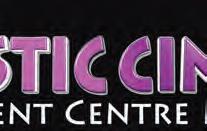
Visitors can pre-order a picnic box featuring local seasonal produce, to enjoy in the grounds or dine al fresco. For clubs and community group bookings and pre-bookings call 5445 7450 Wednesday to Sunday.
Flaxton Gardens, 313-327 Flaxton Drive, Flaxton. November 20-December 4, 9am-3pm. Visit sculptureontheedge. com.au
for their annual Santa Shop Sale. Every year Woodies alsop make and donate lots of wooden toys to the Salvos for the annual Christmas Toy Appeal.
Visitors can see the handiwork and make their Christmas shopping easy with original items that make a unique gift.
Santa’s Shop will also have demonstrations of woodworking equipment; and a demonstration of Kumiko, the Japanese art form that involves making screens from small, accurately-cut pieces of timber forming repeating patterns.
MEMBERS of the Blackall Range Woodworking Guild, better known as the Montville Woodies have been busy. They have been turning out bowls, boxes, carvings, coffee tables, signs, toys, and other interesting and useful articles

The Woodies respect and protect the environment as all the timber used is from trees donated so it is recycled rather than being burned.
Montville Sportsground, 230-238 Balmoral Rd, Montville (3km south of Western Av) November 26-27, 9am-4pm Entry free. Visit blackallrangewoodies. org.au or call 0409 050 418


“Then in 2014 we had an empty nest and decided to resume the dream. I’d lived outside of Australia for 25 years and we could have gone anywhere in the world. It took us about two or three seconds to choose Bali.”
And that’s where they have stayed, although he is finding that he is still as busy if not busier than he was before so-called retirement.
Nigel is working on building Indonesia’s first retirement village on the island’s east coast and is aiming it squarely at the 55+ active retirees.
from the fact that it’s a relatively quick

easing back into international travel after a two-year hiatus, there are plenty of good reasons to head to the Indonesian island of Bali.
Flights are comparatively inexpensive, regular and trouble-free, and once there, holidaymakers can live like royalty on a beggar’s budget.
Bali is not short on natural beauty – rich green landscapes, spectacular cliffs and beaches, tidy rice paddies – and, being predominantly Hindu, has a rich cultural heritage. It’s a happy mix of lazy luxury holiday and seeing the sights of a new culture.

“Indonesia is strong on senior, medical and sustainable tourism,”
says Nigel Glover, who settled in Bali eight years ago. “There are more than 100,000 expats here. They come from all over the world but many are Australian, and most of them are retirees,”
Nigel, 65, first arrived in Bali in 1979, “to party like all the other tourists”. He returned a decade later after travelling extensively. While working at an Austrian ski resort he had met Jacqui, who was holidaying from her home in the Netherlands. They chose Bali for their wedding in 1988 and stayed for five years until the babies arrived.
“Bali was a lot more basic then, so it made sense to go back to Australia, but we often returned for holidays with the kids,” he says.
As an expat, he thinks more about the ongoing issues of living in a new country – health, security, cultural change, social connection – than the daily massages, dining, cocktails and services that make a luxurious yet affordable holiday.

And he has an answer for everything.
“Despite any reports you might have heard, as a resident during Covid it wasn’t a bigger problem than anywhere else,” he says. “Bali was comparable with, or did better than, many western countries in terms of illness and death. Protocols were followed and there were no objections to mask wearing.”
He says a lot of concerns are based on exaggerated problems or fake ideas.
“For example, if you come off a motorbike and end up in a coma in London, New York or Amsterdam, nobody would hear
about it but if it happens in Bali, it’s all over the media,” he says.
“Use basic commonsense and you don’t have to worry about bag snatching, Bali belly or any of the other fears that crop up.”
Then there is the social aspect, and technology, says Nigel, has changed everything.
“Zoom, Facebook, Whatsapp … they are all free and there is a high degree of engagement. Worst case scenario, Australia is a flight of three to eight hours depending on where you live”
In his case, his children are in Perth and he says he sees more of them and has quality time than if he lived othe east coast.
As an old surfer, he had once considered Noosa, but realised it would take longer and cost twice as much to fly from Perth and they would spend far more while they were there.
“The kids are totally supportive of our decision,” he says.
Nigel relishes the fact that every day is different, that he learns something new every time
he steps out his front door and that his world hasn’t shrunk.
Nigel and Jacqui have no plans to leave Bali. He says the only thing that would drive him home would be a high-end health problem, such as triple bypass surgery or cancer treatment. He hastens to add that there is nothing wrong with the health system.

“It would have to be a really big problem as we get excellent medical care,” he says.
Nigel and Jacqui both recently went to see specialists, something they could do without a referral. Wait time was 30 minutes not three months.
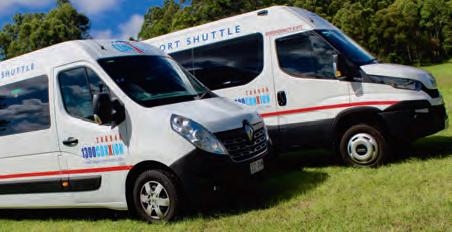
Jacqui saw two cardiologists and had an ECG while Nigel had a 20-minute consult with a dermatologist. The total bill was $65.
“My mate had a hip replacement here and it went very well. I’m healthy and have an active lifestyle, so I’m not too worried,” he says.
But at the end of the day, Nigel says, it’s having a beer while watching the sun set that really makes life worthwhile.
Tiwi
in British Columbia, one of the best















A LIFE without seeing something of Canada with its amazing backdrops, from the glacier-fed lakes and ice-capped mountains of the west to the rugged cliffs of the Atlantic coast, is unfulfilled.
Direct flights from Australia mean Canada is closer than you might think, and whether you travel in summer or winter, there’s much to discover.
Here are some fun facts to whet your appetite:
1. At just over 9.9 million sq km, Canada is second only to Russia in land area, just ahead of the United States and China.
2. The Carcross Desert is the smallest in the world. Tucked away in the Yukon
Territories, it is 2.6 sq km of sand dunes and is popular for sandboarding.
3. Canada’s three million lakes account for more than 50 per cent of the world’s lakes and 20 per cent of its freshwater.
Great Bear Lake is on the Arctic Circle, while Great Slave Lake is the deepest in North America.
4. Of the recorded 25,000 polar bears in the world, 15,500 of them are found in the region near Churchill, Manitoba. The town on the west shore of Hudson Bay sometimes has more polar bears than people.
5. Because of its altitude and northern position, Canada is one of the best

countries to see the Northern Lights.
6. Wood Buffalo National Park in the Northwest Territories, is Canada’s largest national part at almost 45,000 sq km. Founded in 1999 to protect the remaining bison in northern Canada, it’s larger than Denmark, Switzerland and the Netherlands. At nearly 38,000 sq km, Quttinirpaaq National Park is still bigger than Belgium.

7. Every year, about one million letters from children all over the world are sent to Santa Claus’s address: H0H 0H0, North Pole, Canada. In 2008, Santa Claus was officially awarded Canadian citizenship by Canada’s Citizenship and Immigration Minister. See for yourself. Visit travellerschoice.com.au or your local Travellers Choice travel agent
GRANDPARENTS, parents, babies, toddlers and teens can get together for a holiday that has all the generations covered.
Club Med brings the family together with one price, one package and the dream holiday for extended family.
The all-inclusive family resorts take the stress out of planning by designing everything around the needs of each generation.
Relax in a spa while the grandchildren swing on a trapeze; enjoy a game of tennis with the big kids and then dine together at a quality restaurant.
As well as superb accommodation, a Club Med holiday covers full board with breakfast, lunch, dinner and all-day snacks, open bar for beer, wine and spirits, land and water sports for adults and kids and transfers.
The 2023 Early Bird Sun Sale is offering up to 30 per cent off on resorts in Bali, Phuket and Kani in the Maldives, for travel between May 1 and December 16 next year.
Booking early also means securing the preferred resort and dates before they sell out, including peak times, preferred room type, and a spot at Kids Club for the grandchildren.
Visit tewantintravel.com or call 5447 1011

Departing

Departing March 2023 for 15 days




Includes Cairo, Alexandria, Nile Cruise, Giza, Abu Simbel, Valley of the Kings and more.
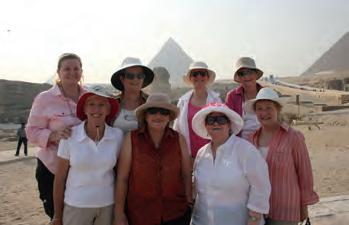
Departing August 2023 for 25 days
This journey will take you through some of the most remote areas of south east Alaska by sea before heading north on land to explore the history of the Goldrush and Yukon Territory.
Full details coming to our website soon!
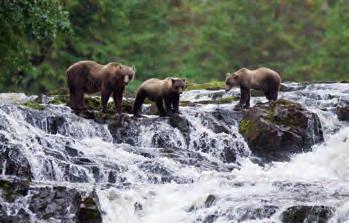
FROM the Red Centre to coastal wilderness, mighty rivers to remote ranges, and busy cities to quaint country towns, Australia is a diverse country –and it’s increasingly appealing to domestic travellers.
Grey nomads set off in their thousands when Covid limited international travel, and now many have been converted to the joy of finding out more about their own backyard. And they haven’t been disappointed.
Whether it’s the big lap, shorter trips to avoid winter cold, summer heat, rain or drought, or simply a holiday, domestic tourism has taken off.
“Domestic tourism is booming,” says Paul Brockhurst of CT Travel. “Covid restrictions have lifted, there’s no quarantine and we are all free to travel again, but many are choosing to continue their adventures around Australia.”

In the June quarter this year, spending on accommodation, dining out and shopping, recorded the biggest increase since the start of the pandemic.
For years, Paul has been planning innovative itineraries for travellers to see the country the easy way.
“A spacious, air-conditioned luxury coach is the easiest, safest, and most comfortable way to go if you really want to get around this great country and learn more about it,” he says.


“And it seems increasing numbers of travellers are doing just that because domestic tourism is booming, and tours are filling fast as destinations find they are hitting peak numbers.”
There’s no shortage of variety. Be mesmerized by the autumn colours of the New England Tableland, explore the national capital, visit King Island in the middle of Bass Strait, venture into the Australian High Country or enter the world of the Top End.

Closer to home, take a quick getaway to Fraser Island and World Heritagelisted Lamington National Park and holiday in style while learning more about the beauty and history of locations that are right on our doorstep.
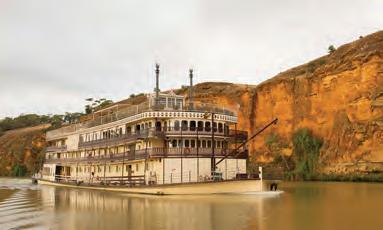
“People come from around the world to see these places and yet often we haven’t quite managed to get there ourselves,” Paul says. “If it’s on the list, then start making plans for 2023.”
Whether it’s seeing the glow worms while staying at O’Reillys Rainforest Retreat, visiting the magnificent Everglade Gardens at Leura in the Blue Mountains or heading for the sky at the Canberra Deep Space Communication Complex, Australia has a lot to offer.
Paul and the crew at CT Travel have devised a range of exciting itineraries covering all the must-see experiences.

Visit cttravel.com.au or call 5391 1648













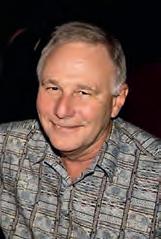
REVIEWER Bill McCarthy has been travelling and was unable to review this book. However, given the title and subject matter he has reported, with his usual acerbic observation, that it was most likely a blessing.
 SUZI HIRST
SUZI HIRST
The first chapters of this book had me wondering if it would be something along the lines of a Barbara Cartland or Joan Collins – a predictable Hollywood film star
As it transpired, the book is well written and the characters that each chapter (husband) portrays are well characterised and believable.
Evelyn Hugo’s story from Hell’s Kitchen to Hollywood and fame keeps you turning the pages. She is many characters – lover, flawed, a trusted loyal best friend to a few, and an incredible mother.
And although I knew there had to be a twist, it was not what I expected. Taylor Jenkins Reid has written the perfect book to immerse yourself in while sitting on a beach; not sure what the men will think though! 7/10

THIS is a very readable book which had me enthralled from the start right through to the many twists in the last few chapters.
The two women through whom the story is told could not be more different. The simple and naive Monique has been selected to write the memoirs of Hollywood star Evelyn Hugo. Navigating the cut-throat world that she claws her way into, with beauty as her main weapon, Evelyn rides a roller-coaster of loves and disappointments that you can’t help but find engaging. The relationship between the two develops artfully throughout the book, until the revelation of their real connection.
The author cleverly uses excerpts from magazine and news articles to give context to the changes occurring as Evelyn passes through each husband and phase in her life.
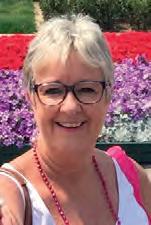


I surprised myself by how much I loved this peek into the shallow world of Hollywood to find real characters you couldn’t help but become emotionally attached to.
 By Taylor Jenkins Reid
By Taylor Jenkins Reid

Aging and reclusive Hollywood movie icon Evelyn Hugo is finally ready to tell the truth about her glamorous and scandalous life. Little known magazine reporter Monique Grant is astounded when she is chosen for the job and is determined to use the opportunity to jumpstart her career. Summoned to Evelyn’s luxurious apartment, Monique listens to the actor’s story, from Los Angeles in the 1950s to her decision to leave showbusiness in the ‘80s. With seven husbands along the way, Evelyn’s tale is of ruthless ambition, unexpected friendship, and a great forbidden love. Monique begins to feel a real connection. It then becomes clear their lives intersect.
I didn’t want to read this book about a glamorous, legendary movie star and the machinations of her seven marriages. However, once I began, I found the story entertaining and so engaging I couldn’t put it down.
The author gives great insights to movie personalities, their charm and charisma, their sensuality, sexuality and what it was like to be gay during the 1960-‘80s. Homosexual and bisexual love are treated with a tender and caring narrative.

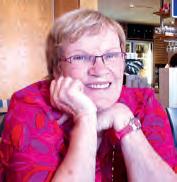
The main characters are well drawn and like human nature, have their strengths and weaknesses. There are a few twists tying loose elements of the story together at the end.
This well-written book won’t disappoint. 8/10
THIS fictional biography of Evelyn Hugo, a beautiful woman, is a fast-paced, fun novel that reveals all the good and the bad about Evelyn and her seven husbands.
Evelyn, an enigmatic character, does everything for a reason including choosing Monique (a journalist) to write her story. I liked how the book was structured into interviews about each husband allowing the author to explore the role of women in marriage, the sexualisation of actresses, beauty and ageing and the demonstration of ambition.
Reminiscent of the “Me Too” phenomenon, the story is believable for readers who have lived through the glamour years of Hollywood and movie stars such as Elizabeth Taylor. It has many twists and turns and a not completely predictable ending.
PERHAPS readers are divided into two groups? One group, all ages, eagerly devour gossip magazines and news releases detailing the exploits, actual and contrived, of those in the public eye.
The other group, to which I belong, couldn’t care less and are never likely to change. However not having lived under a rock, even I realised that Evelyn Hugo was in fact Elizabeth Taylor and a Google search not only confirmed it but also mentioned forbidden relationships between her and other celebrities.

Surprisingly, I found the story well researched and told with sympathy, with an unexpected twist in the connection between the journalist and Evelyn’s past. It was an easy read and led me to some understanding of what our top actors go through as they deal with the loss of privacy and non-stop pressure to perform and improve.
This was the author’s first foray into historical fiction out of her nine novels. I am very tempted to read her earlier novels as a comparison when time permits.
1.
2.
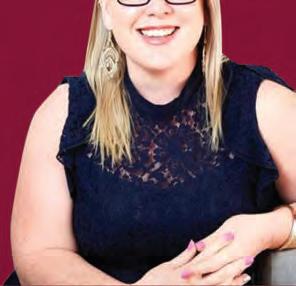

3.
4.
5.
6.
7.
the

town name is a homophone of “anarchy”?
can be devastated by the bunchy
conversations?
what device was used for
which Australian state or territory is Shute Harbour?
is 50 per cent of 62,408?
type of pendulum clock is housed in a tall freestanding case?

kind of living thing is a loggerhead?
many consonants are between O and U in the English alphabet?


9. Before the European Union, what was the second E in EEC?
10. Which of these words is closet in meaning to clandestine: secret, open, forgotten?








11. Where on the human body is a bracelet usually worn?

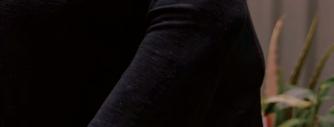


12. What shape is at the top of the logo for the Queensland Police?
13. Women of what religion often wear garments called a burka or a hijab?

14. The confection coconut ice is traditionally what two colours?
15. In the old system, what distance was longest: inch, yard or furlong?
16. What is normally housed in a scabbard?



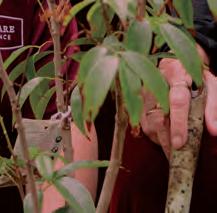


17. In rock, paper, scissors, what beats scissors?

18. In cricket, how many runs does a batsman have to score to get a ton?
19. True or false: Brigadoon is a village in Scotland.

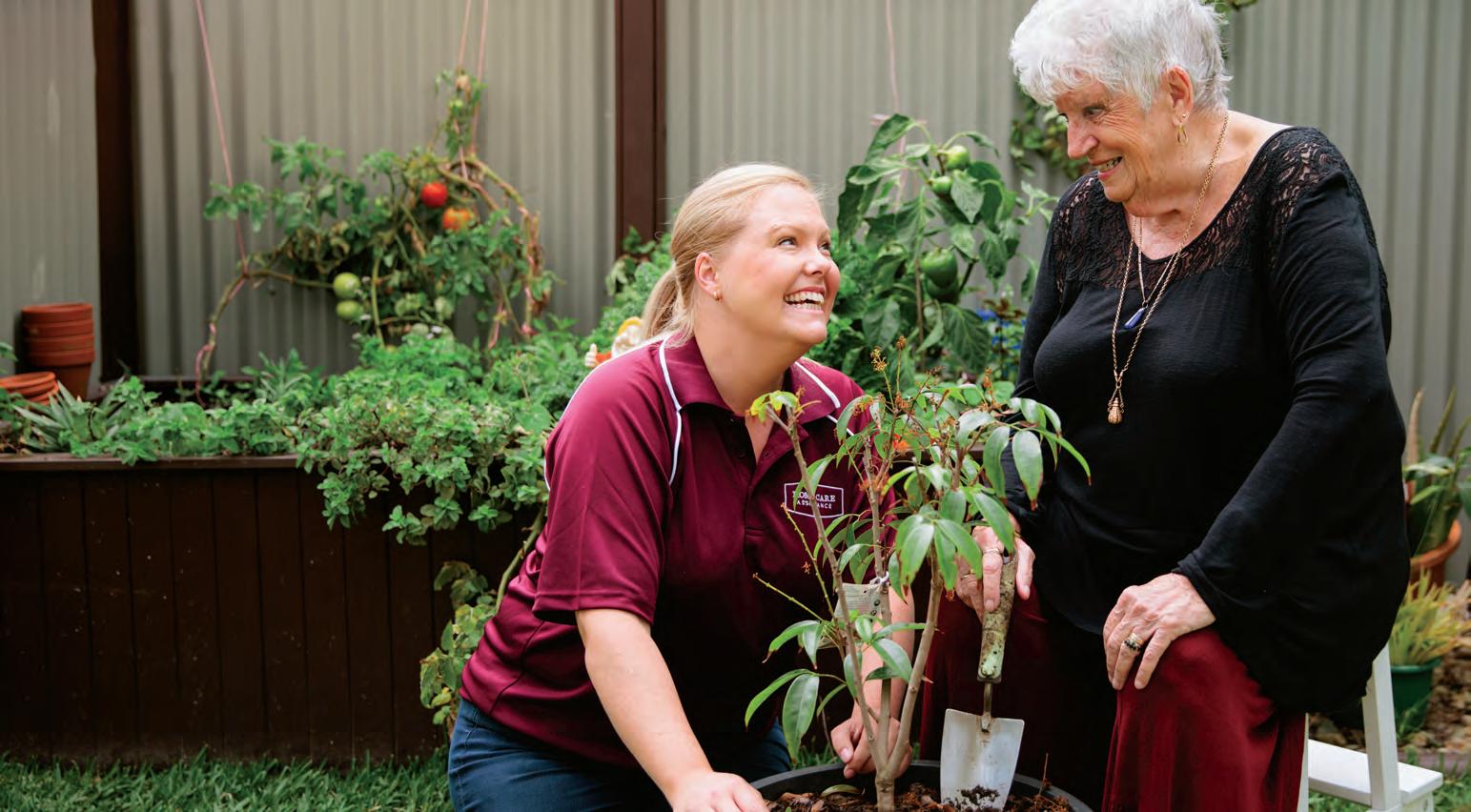
20. What nationality is comedian Glenn Robbins?
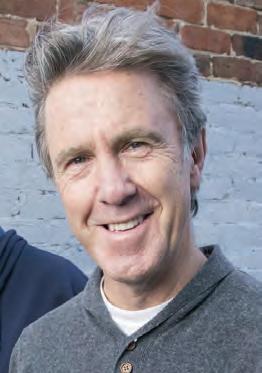
16.Swordorknife;17.Rock;18.100;19.False–itisamyth;20.Australian.
7.Seaturtle;8.Five;9.Economic;10.Secret;11.Wrist;12.Crown;13.Islam;14.Pinkandwhite;15.Furlong;



1.Anakie;2.Bananasorpapaya;3.TheConeofSilence;4.Queensland;5.31,204;6.Grandfatherorlongcase;

pig(8)
a rule, sorted out
obstacles(7,6)
group of
highly valued, told stories(8)
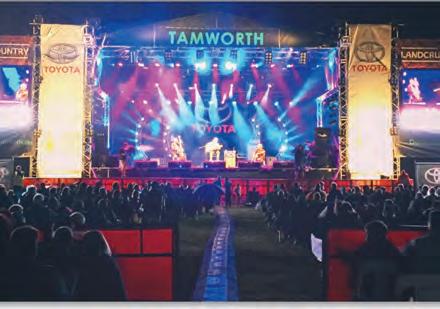

in top gear at work(9)
country also known as the capital of Zambia(6)
on our table,
without a starter, is disgraceful(13)
of dog children avoid with parent around(9)
sheep stood up(3)
taking possession of one opposing perfumingmaking plant(8)
spent with acting school established in free West Indian region(8)

vessel stored in another(6)
of infantry stopped an appointed meeting(5)
Application not accepted by Aussies without changes(2,2)








































